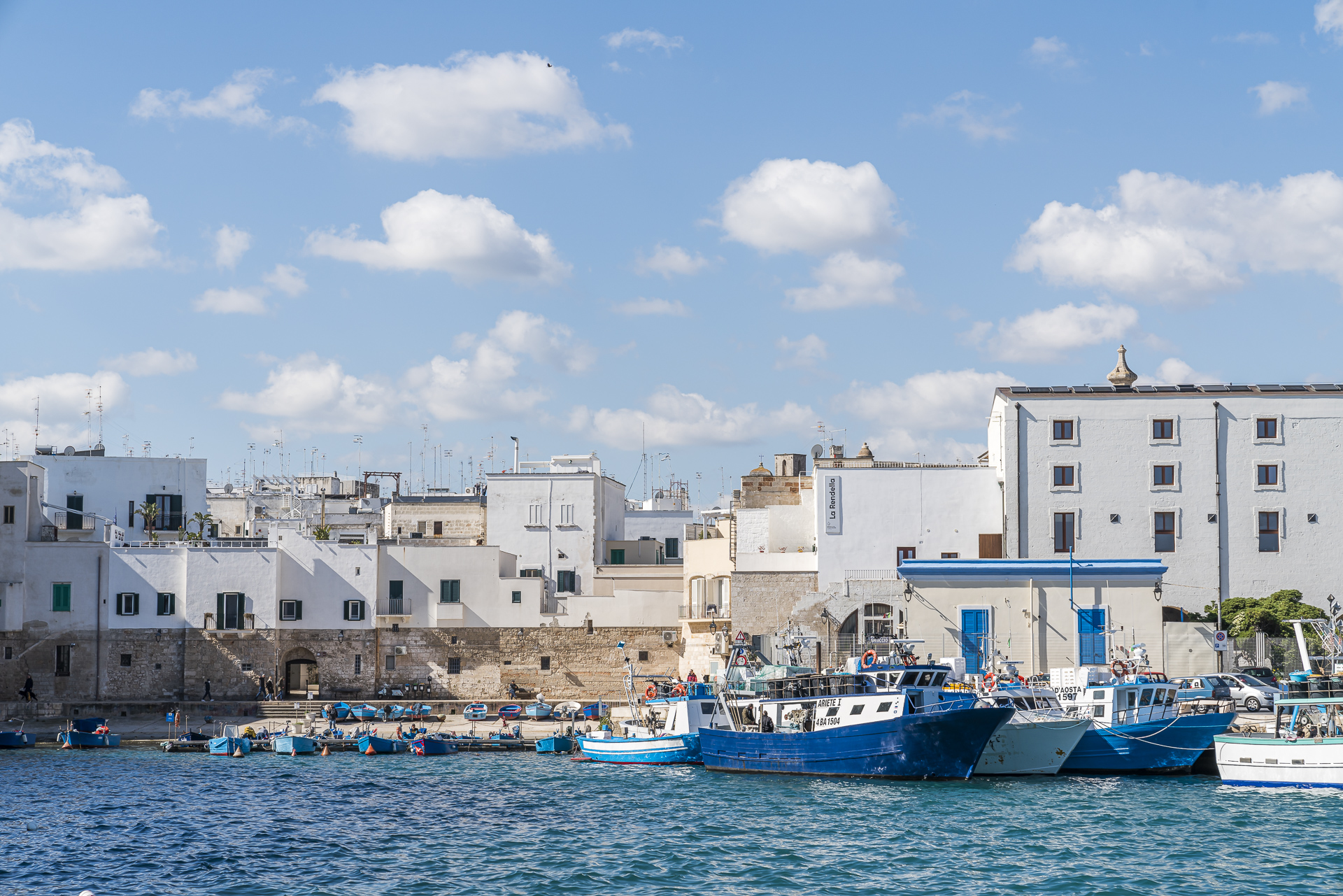
Apulia road trip – sights, tips and route of our tour
In recent years, the Puglia region has blossomed from an insider tip to one of the most popular holiday destinations in southern Italy. No wonder – around 800 kilometres of coastline with fantastic beaches, picturesque villages and numerous cultural sights beckon here in the heel of your boot. In addition, you can relax in the numerous, lovingly renovated trulli and masserie located in the middle of extensive olive groves.
We took a week in spring to explore the most beautiful places in Puglia and show you the highlights of our Puglia road trip in this post.
Puglia Road Trip – Route overview of our round trip
Our round trip through Puglia was part of a 14-day trip to Italy starting in Milan. We rented a car at Milano-Malpensa airport, which is easily accessible by train from Switzerland, and took the via Val d’Orcia (Tuscany) and the Bay of Naples to Puglia. At Bari airport we returned our rental car. We then took the train back to Zurich.
Bari, the capital of the Puglia region, is also one of the best starting points for a round trip through the heel of the boot. By train, the journey from Zurich via Milan (where you have to change trains 1x) takes just under 12 hours. For all those who would like to include a detour to the Gargano National Park on their Puglia round trip, it is worth getting off one stop earlier in Foggia.
In Foggia there are various car rental companies near the train station. In Bari, it is worth checking whether the rental car offer near the train station (in the city center) or at the airport (from Bari Centrale about 20 minutes by train) better suits your own needs (vehicle fleet, price).
Due to the sheer variety of sights, it is advisable to plan enough time for a trip to Puglia. We had planned a total of 6 nights/7 days for Puglia plus 2 nights for the city of Matera in neighboring Basilicata. With this time budget, you are “forced” to set a regional focus. We focused on the three southernmost provinces of Bari, Brindisi and Lecce.
Puglia can also be visited entirely by public transport. The well-known tourist places such as Lecce, Ostuni or Alberobello can be reached by train and bus. In some cases, however, the train stations are relatively far away from the historic city centre (in Ostuni, for example, almost three kilometres). Beaches and sights that are located away from the cities (e.g. Castel del Monte) are also difficult or sometimes not accessible at all by public transport. The same applies to some accommodations (such as the Masseria Dagilupi near Ostuni in our case). Thus, the choice of means of transport is directly related to the individual planning of a trip to Puglia.
The route of our Puglia round trip as well as all accommodations, sights and other attractions and restaurants visited by us are located on the following map. The individual stages were divided as follows:
- Two days in and around Monopoli (Bari region)
- Two days in Salento
- Two days in the Valle d’Itria
- Continue towards Matera, where we spent another two nights
Tag 1: Castel del Monte, Trani und Monopoli
As written in the introduction, our first day in Puglia does not start in Bari, but at the Gulf of Naples, where we enjoyed the magnificent view of Vesuvius for a total of three days from Vico Equense. From here, a good 360 kilometres separate us from the first stage destination of our Puglia journey – Monopoli. We choose the route via A16/E842, which takes us across Italy from the Mediterranean Sea to the Adriatic coast.
This choice of route allows us to combine the outward journey with two sightseeing stops. On the one hand, we want to take a look at Castel del Monte as one of two UNESCO World Heritage Sites in Puglia. On the other hand, I would like to take a short stroll through the coastal town of Trani.
The Castel del Monte, which is impressively enthroned on a hill, has been classified as a UNESCO World Heritage Site since 1996. The castle was built in the 13th century by order of the then Emperor of the German-Roman Empire Frederick II. It is assumed that the interior work was never completed.
When we reach Castel del Monte around noon, the official parking lot (Parcheggio CAT Castel del Monte di Giovanni Basile) is already filled to capacity. This is due to the fact that it is Easter Monday and accordingly many Italians take a trip here. Apart from such peak days, it should be easy to find a parking space here. Instead, we use a parking lot run by private individuals at the back of the Castel and walk from there a bit through the forest up to the castle (the path can be seen on Google Maps).
We leave it at a short flying visit and continue after circling the massive octagonal structure. If you want to visit the interior of the castle, you have to register online in advance (entrance fee 7 euros, as of 2022). Further information can be found on the website of Castel del Monte.
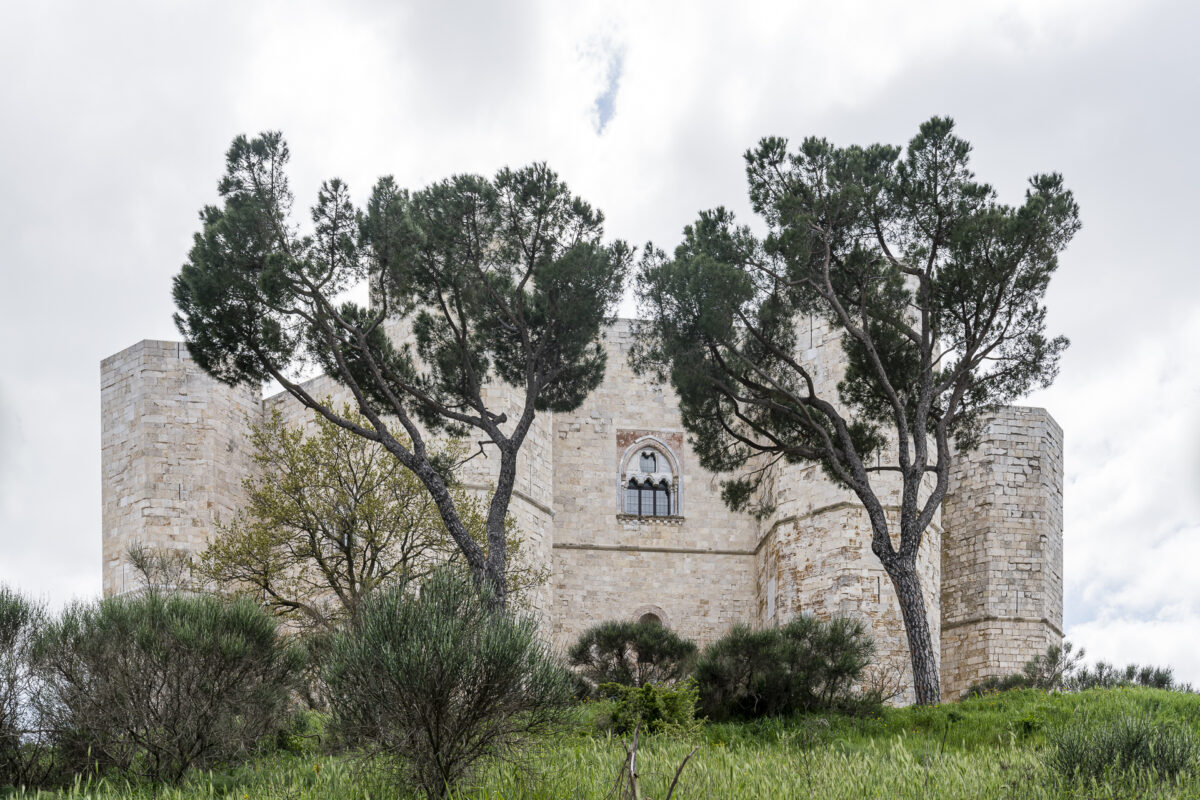
I am very positively surprised by our second stopover of the day: the historic coastal town of Trani with its impressive cathedral of San Nicola and the defiant Castello Svevo (also a building from the era of Frederick II). Trani makes a relaxed and definitely not overcrowded impression on me. We regret that the advanced time pushes us to continue. In my opinion, it would have been worthwhile to plan a little more time for Trani. Especially because afterwards we were recommended a visit to the Ristorante Quintessenzaristorante, which has been awarded a Michelin star.
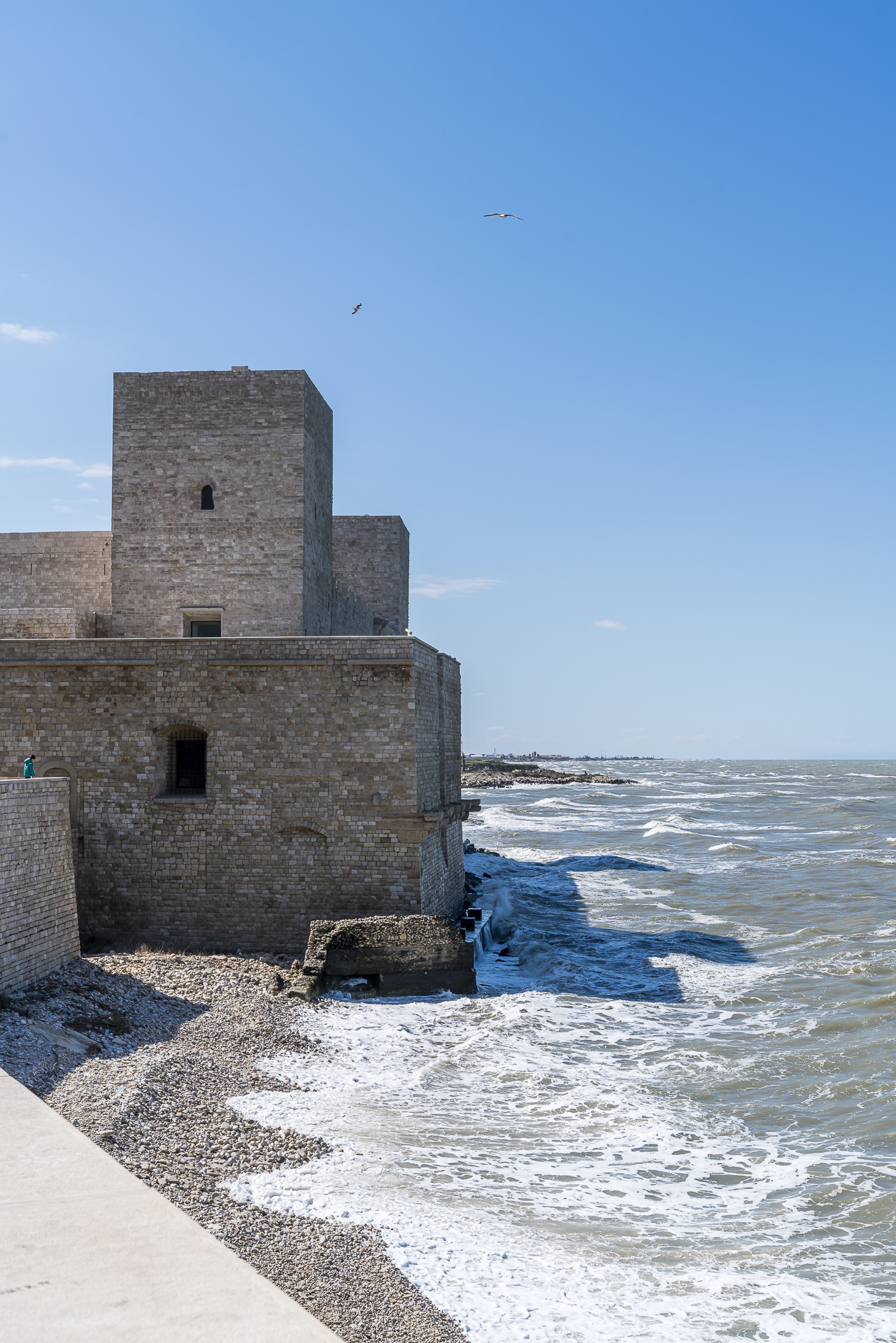
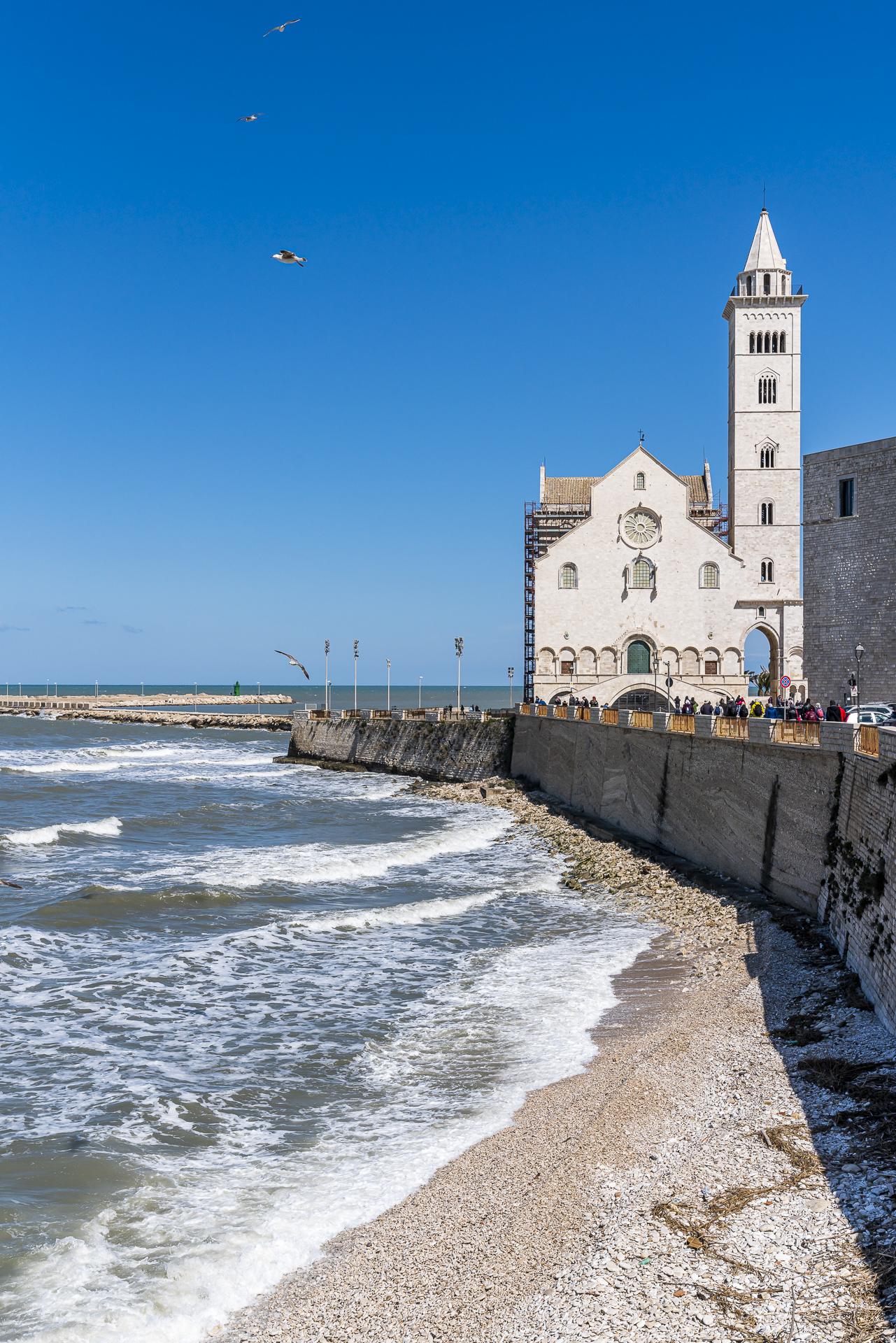
Just in time for sunset, we reach the tranquil port town of Monopoli – our base for the next few days. We spend the night here at the Hotel Don Ferrante (partner link) in a room directly above the city wall.
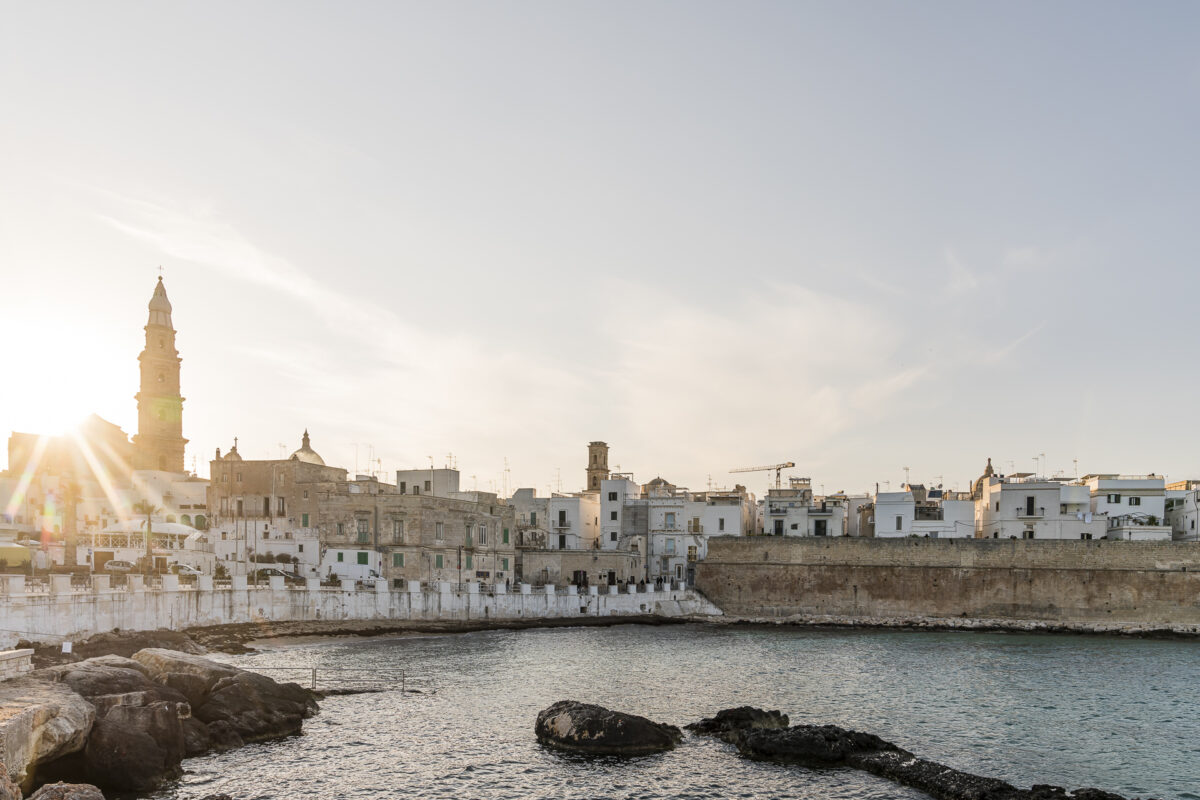
Day 2: A trip to Polignano a Mare
The next morning, we can watch from our bed as the sun rises “from the Adriatic” and makes the sky glow orange. Definitely one of the highlights of our Puglia trip.
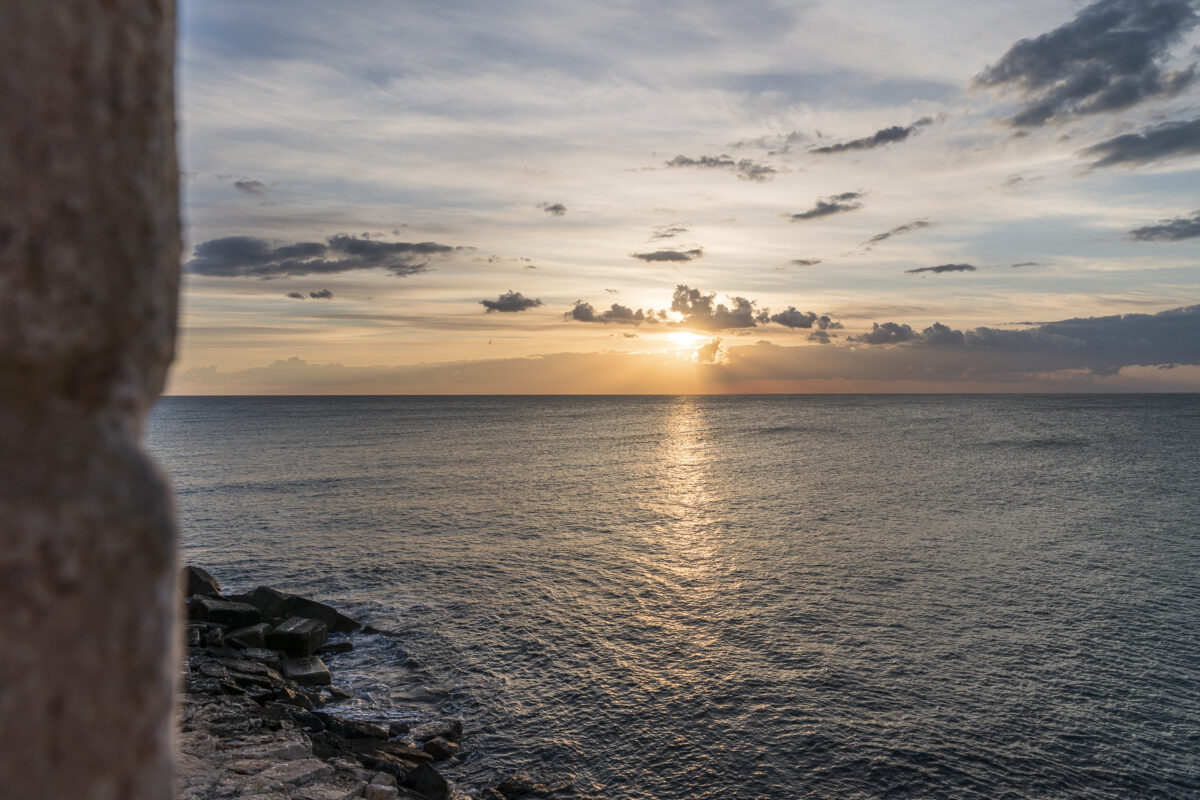
After we have covered a decent distance by car the day before, we want to take it easy today and head for the neighboring Poligano a Mare. Built on a rocky plateau above the sea, the town is one of Puglia’s most popular holiday resorts. And rightly so – Polignano a Mare, with its whitewashed houses high above the glittering turquoise waters of the Adriatic Sea, is photogenic from almost every angle.
In the high season, there is a lot of activity here. Now, in April, however, there is still little sign of this. The restaurants and shops are in the “pre-season groove”. Some establishments remain completely closed or have reduced opening hours. Take about two hours to take a leisurely walk through the narrow streets to the Punto Panoramico Largo Ardito, starting from the historic city gate Archo Marchesale. Along the way, you will pass various viewpoints from where you can admire the city scenery from different angles.
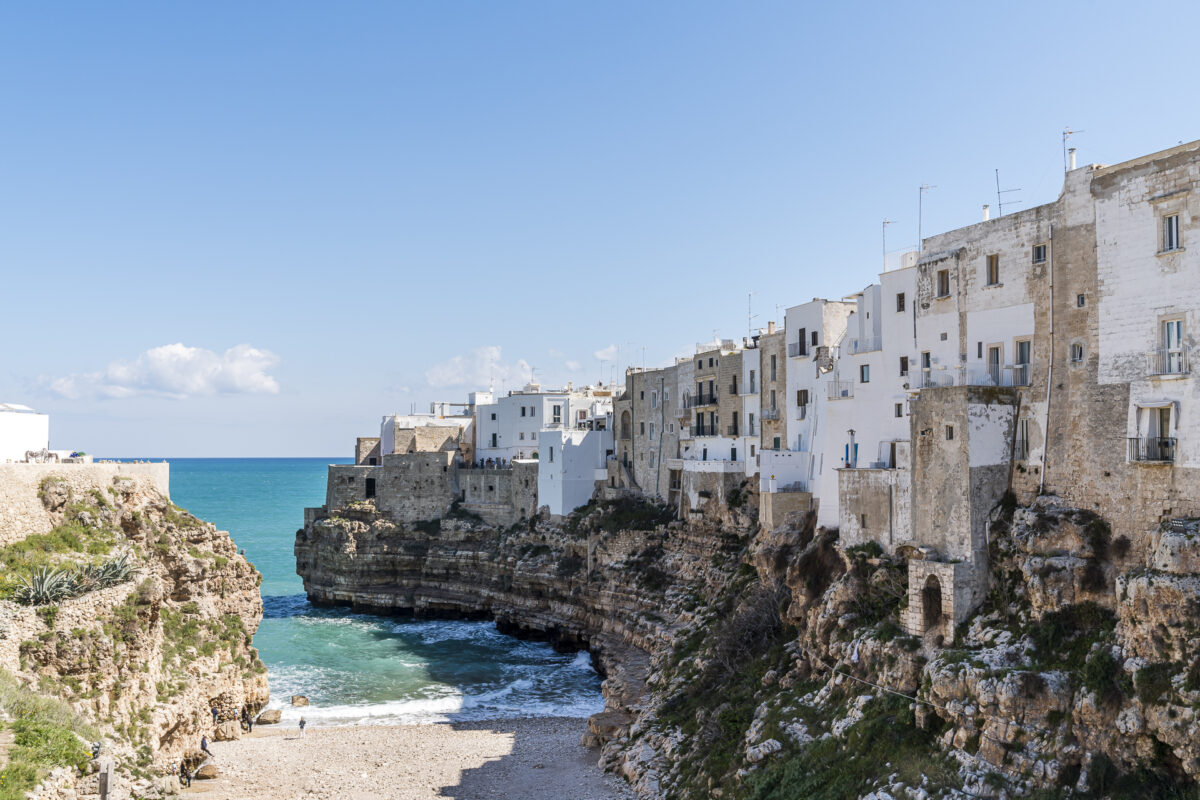
Polignano a Mare also has a culinary highlight in store for us; the Ristorante Jamantè! The restaurant, which opened in 2020, is located a 15-minute walk outside the old town centre and delights us with its cuisine at star level. For 80 euros there is a tasting menu – alternatively you can also order à la carte. With the exception of Wednesday, the Jamantè is open daily at noon from 12:30 to 15:30 and in the evening from 19:00 to 23:30. With us there would have been free tables even without a reservation – but if you want to be on the safe side, you can reserve a table by phone.
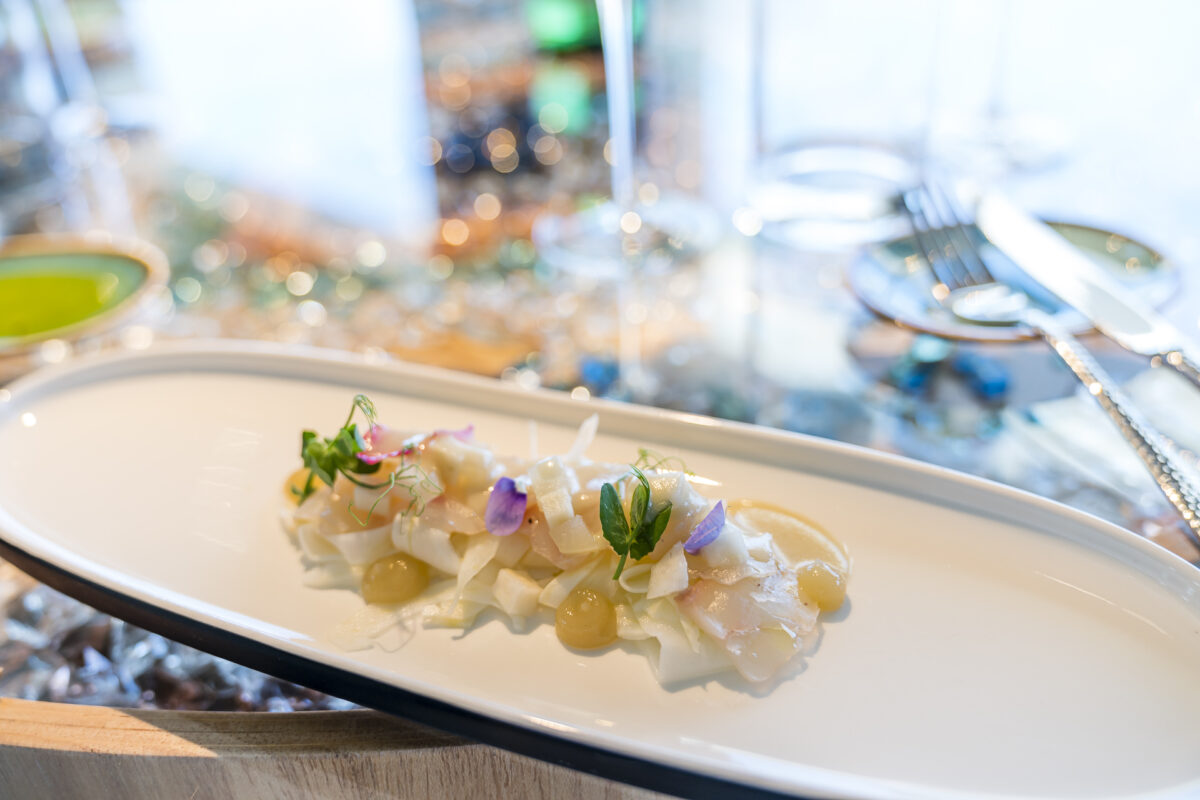
And another tip: between Polignano a Mare and Monopoli there are several beautiful bays. For example, we liked Cala Incina.
Back in Monopli we enjoy the last rays of sunshine of the day on the roof terrace of the Don Ferrante. This is also accessible to external guests and is an excellent aperitif location. In my opinion, the decision to choose Monopoli as one of three places to stay was absolutely right! So you can enjoy strolling through the pretty, winding alleys in the morning and evening hours without haste and crowds.
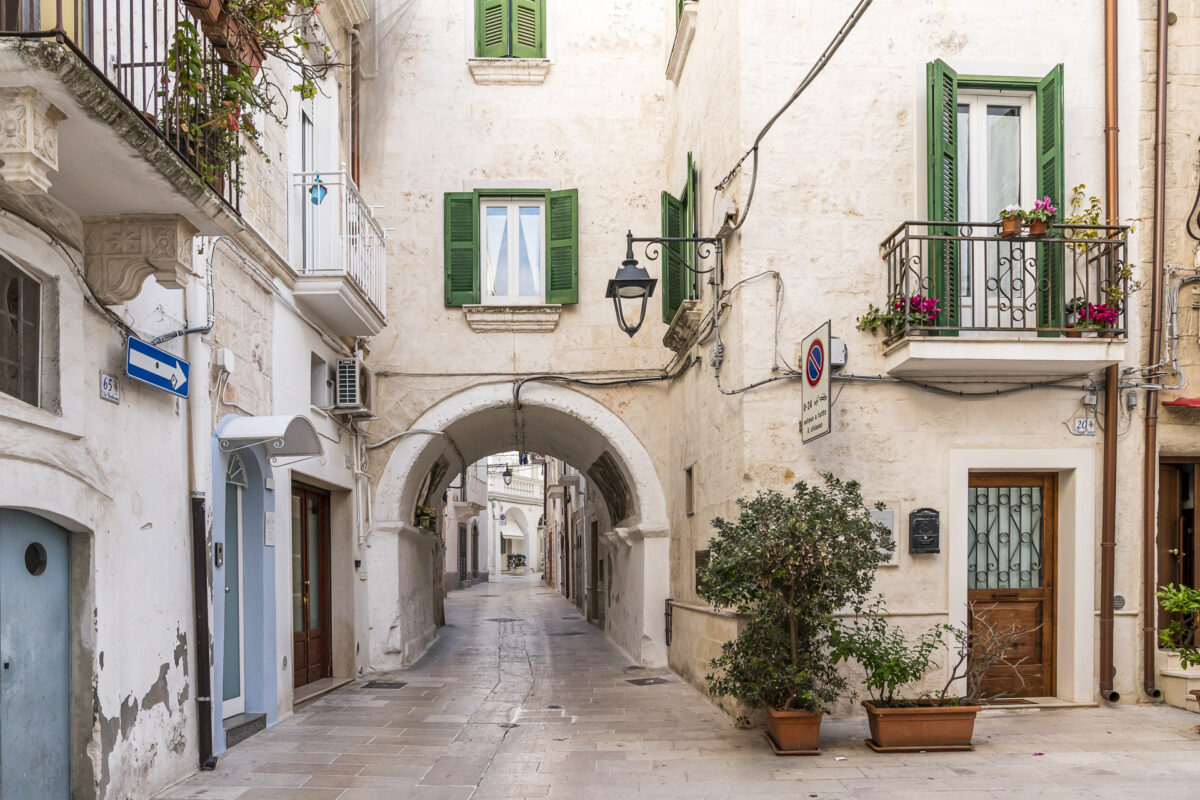
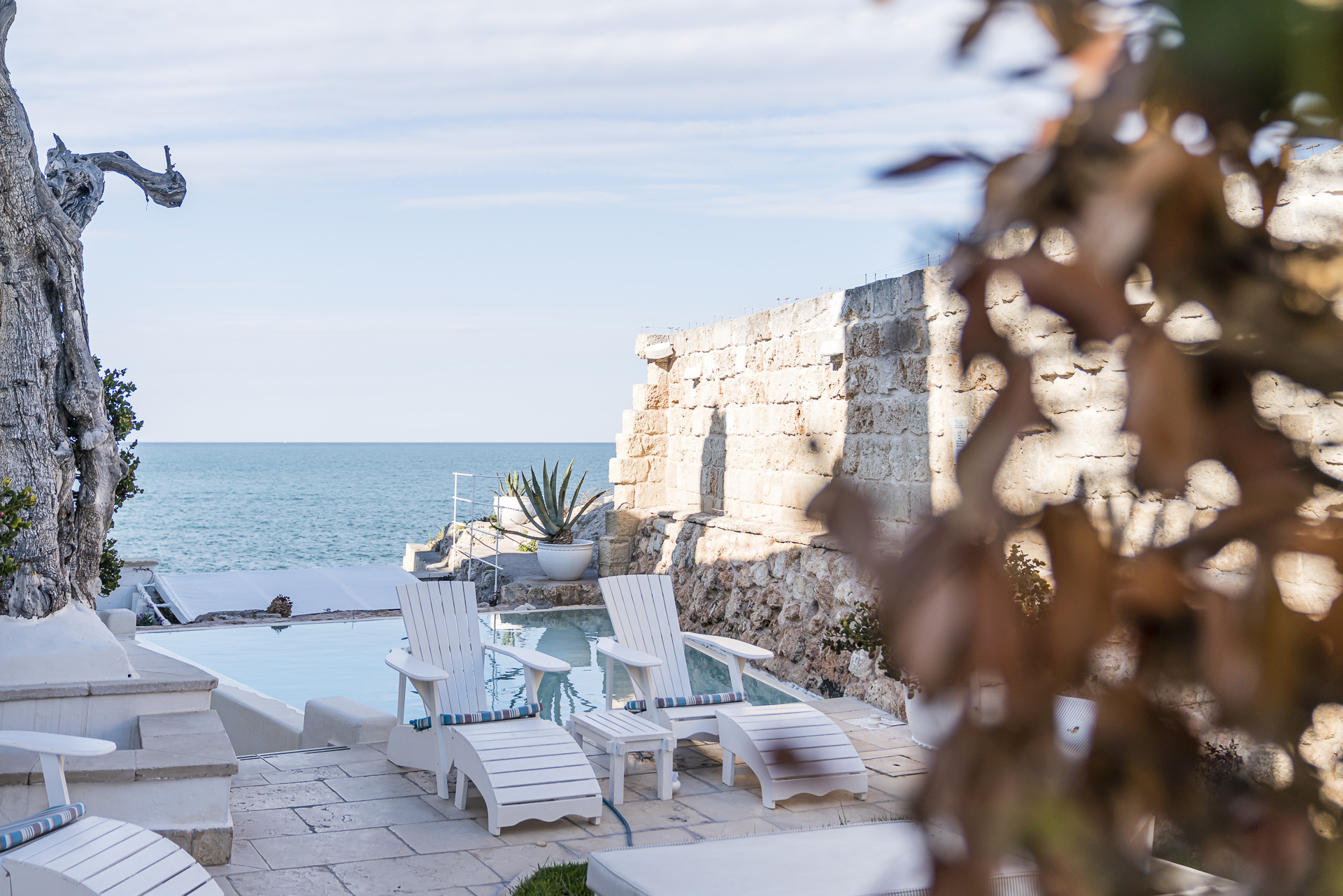

Day 3: Drive to Salento
Of course, there are other exciting sights to discover around Monopli. Among other things, I had marked the Museo Archeologico di Egnazia (an excavation site of the ancient city “Gnathia”) and the fishing village of Savelletri as potential stopovers. Finally, on the third day of our Puglia trip, we decided to focus on Lecce. Lecce is the cultural and economic centre of the Salento peninsula, which stretches about 100 kilometres to the heel of the boot (or the most south-eastern point of Italy).
Lecce is often referred to as the “Florence of the South” due to its magnificent baroque buildings. If you want to visit all the sights of Lecce, you should take at least a full day. With a time budget of around three hours, however, you also get a good overview of the historic buildings in the Centro Storico.
We parked our car in the “Parcheggio Ex-Foro Boario” car park, which is within walking distance of the centre, and from there we took a two-hour tour of the old town centre. It’s best to mark the following buildings as fixed points on Google Maps: the Roman Theatre, the Cathedral, the Roman Amphitheatre and the Basilica of Santa Croce with its impressive magnificent façade.
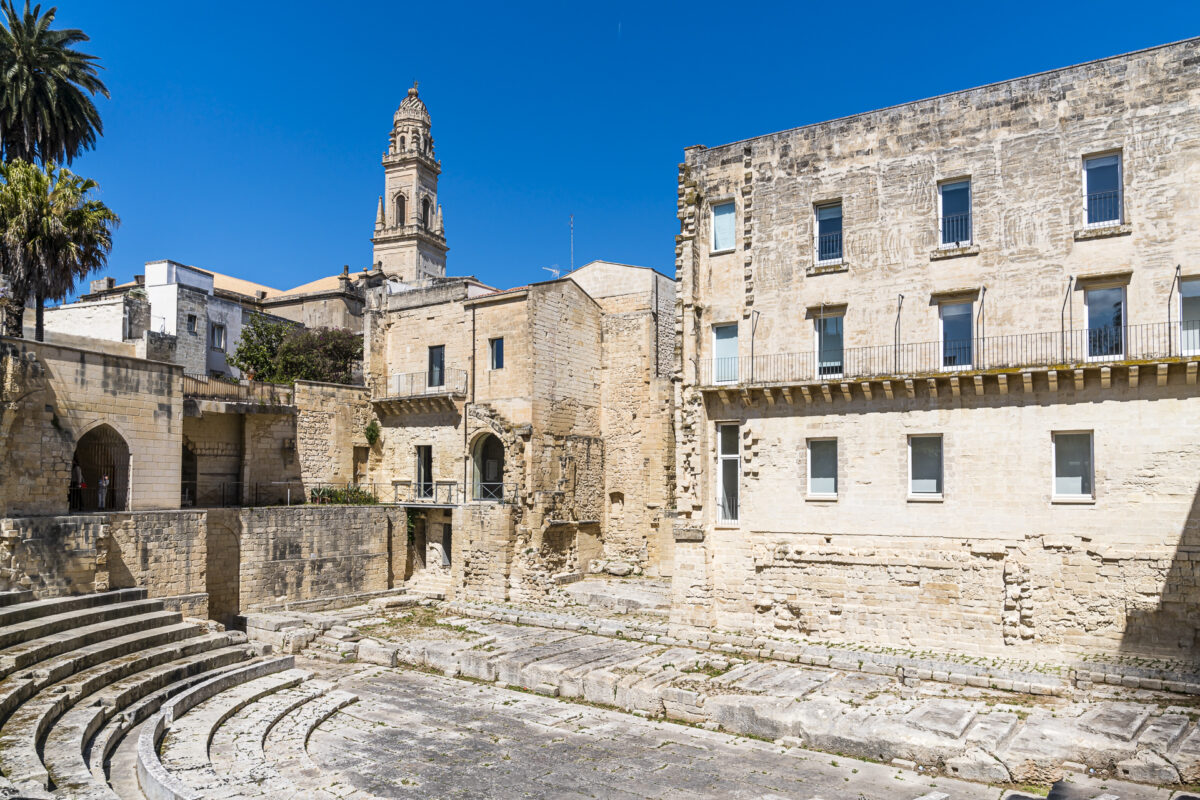
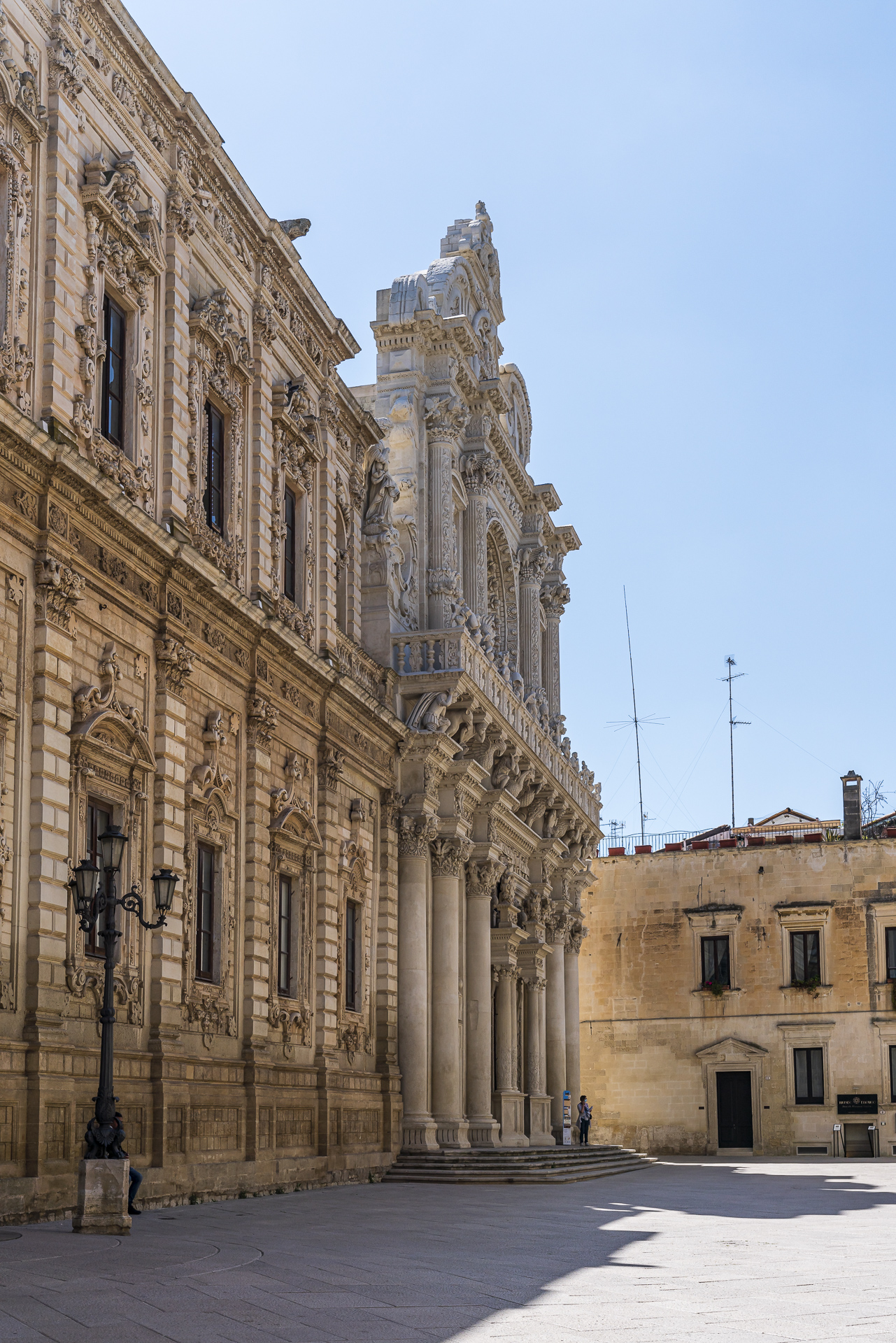
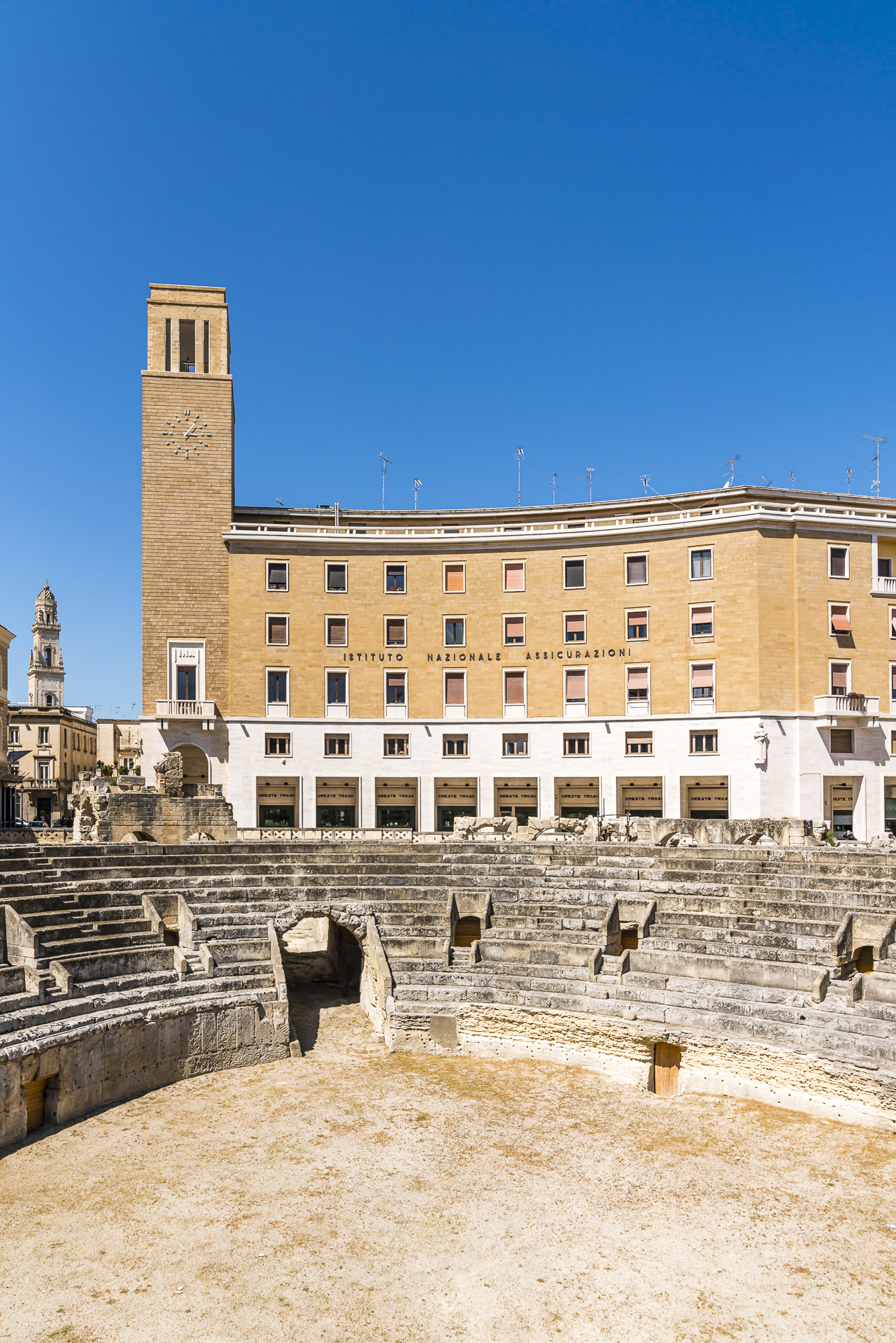
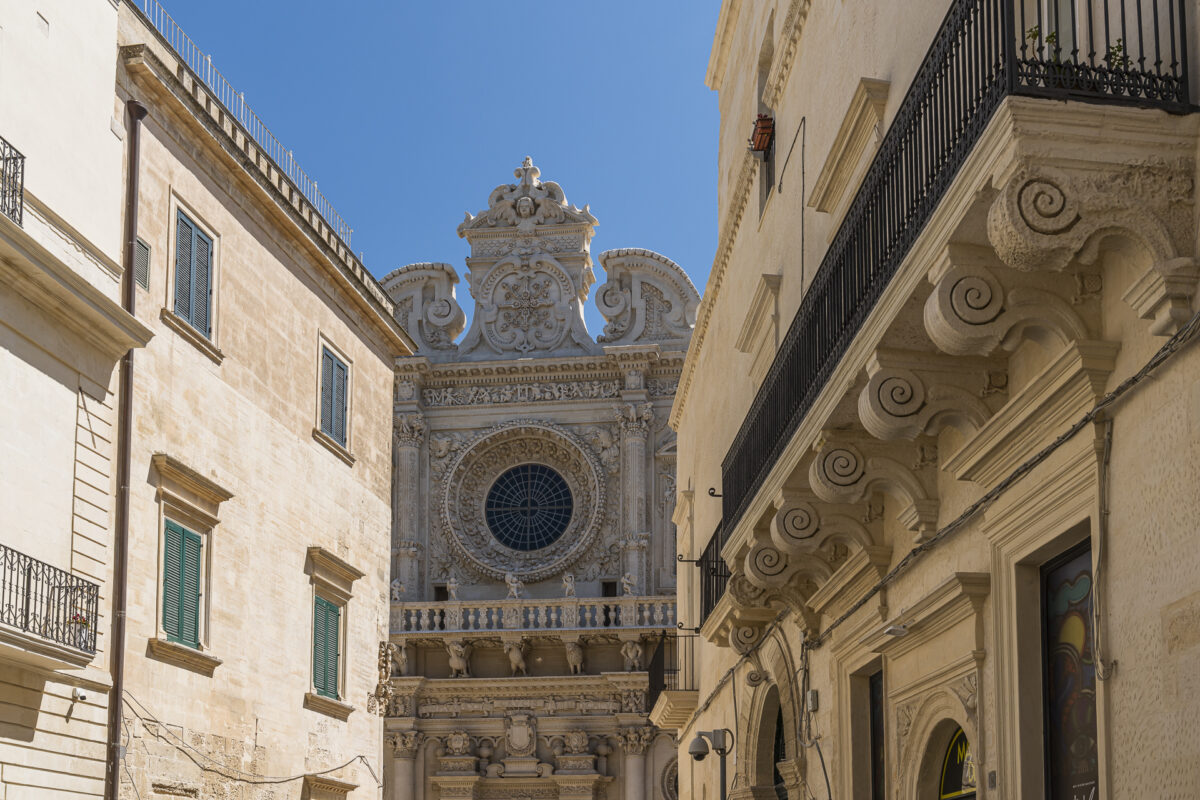
Shortly before noon we continue towards Gallipolli. Located on the west coast of Salento, the port city scores with a sandy beach directly in front of the old town (as well as other beautiful beach sections near the city) and a lively town center with numerous restaurants. We stopped at the Osteria Sant’Angelo, which is somewhat hidden in a side street, and were completely satisfied.
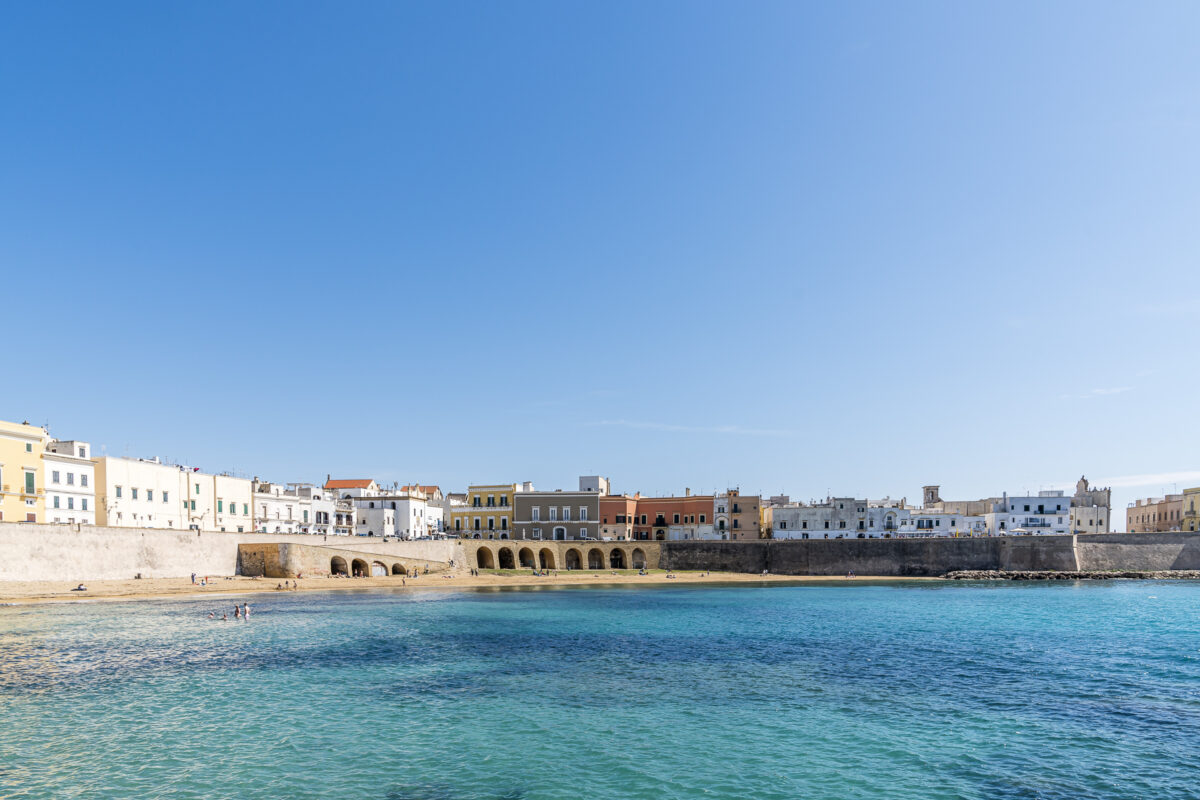
Our second accommodation in Puglia is located just a 20-minute drive from Gallipolli in the hinterland. Since we want to take advantage of the nice weather before the rain announced for the next few days, we install a small additional loop on the way there. We follow the coastal road SP 108 in a northerly direction to Santa Caterina. Along this route there are several beautiful bays and “lidos” (sandy beaches). A particularly beautiful, wild stretch of coast awaits you at Torre Uluzzo. From here, signposted hiking trails also lead along the coast. If you are planning a longer stay on the coast, it is best to park your car on the “Parcheggio del curvone“.
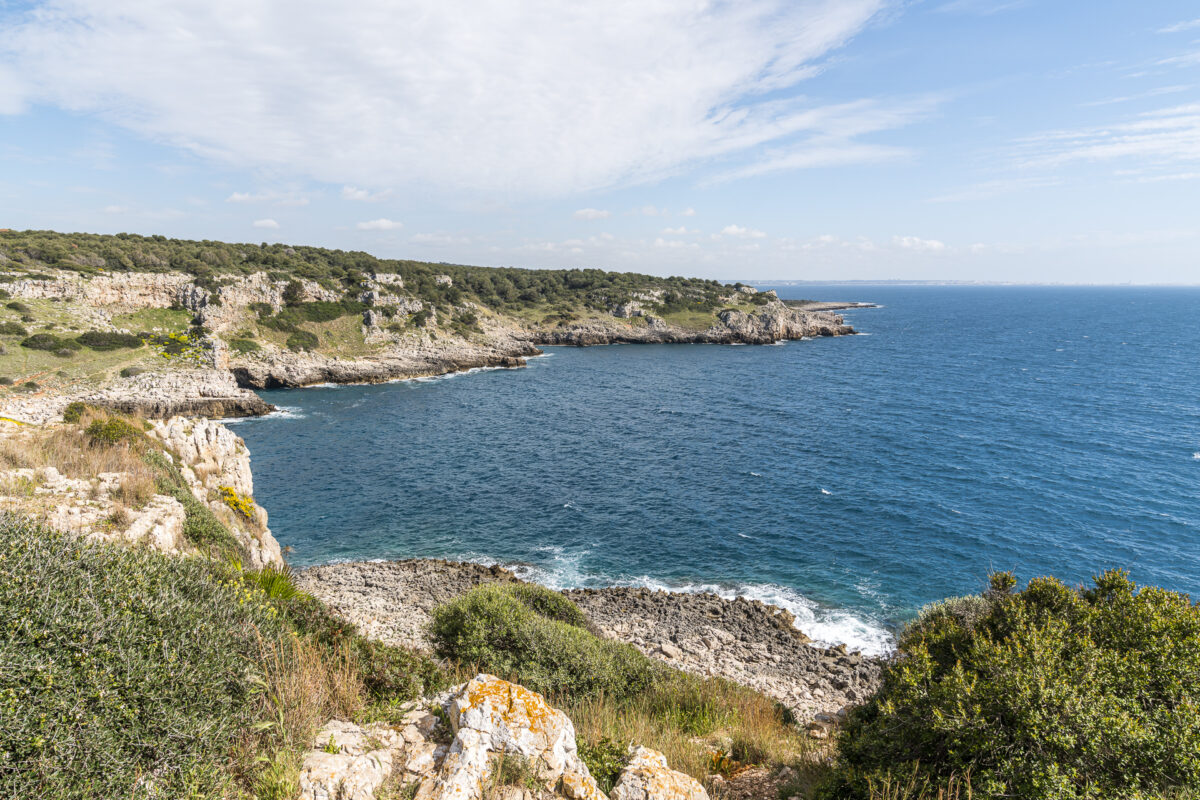
Day 4: (not entirely voluntary) break day in Matino
Actually, we had chosen our accommodation in Matino – the Palais Gentile (partner link) – because of its centrality. From Matino you can explore the beautiful coasts of Salento in the best possible way. The owners of the Palais Gentile also give us a few sightseeing and restaurant tips right after checking in. And we diligently make plans for our fourth day of road trip during dinner at Ristorante Foscolo right next to our accommodation.
But unfortunately, an acute gastrointestinal complication throws a spanner in the works. And so I spend most of my day 4 in our – fortunately mega cozy and spacious – room in the Palais Gentile.
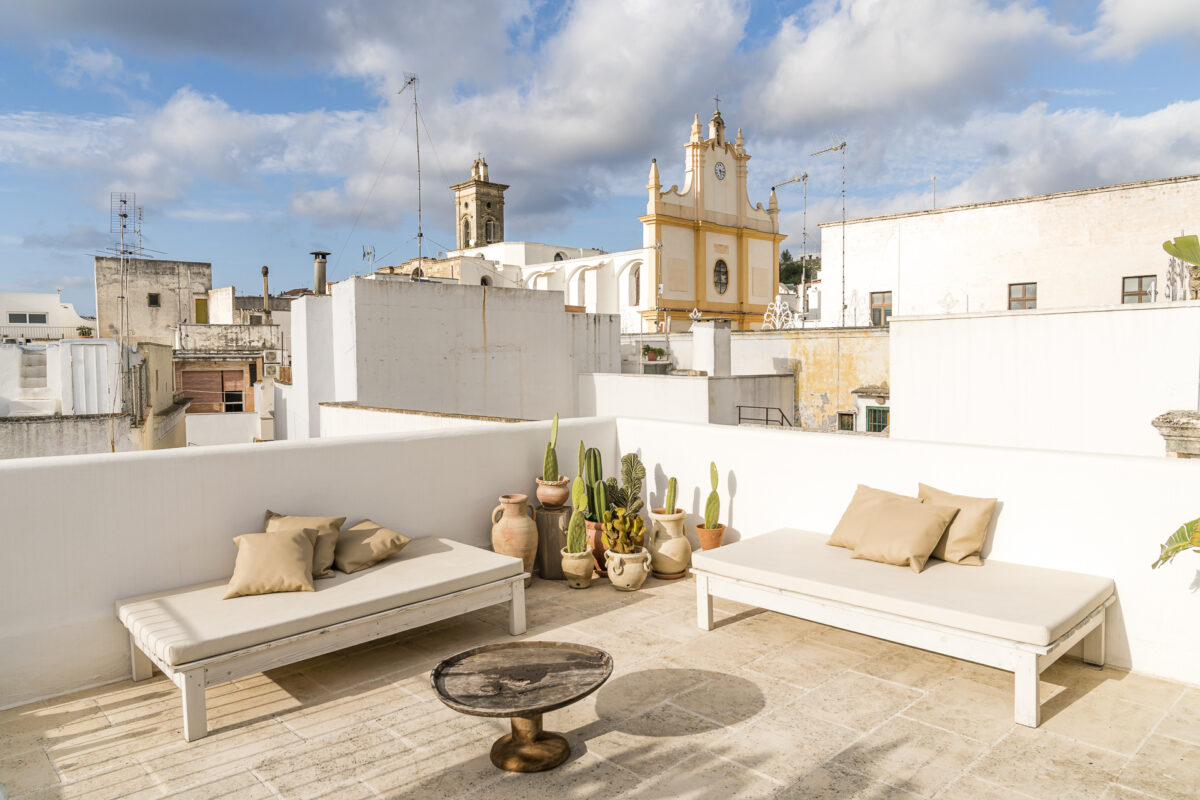
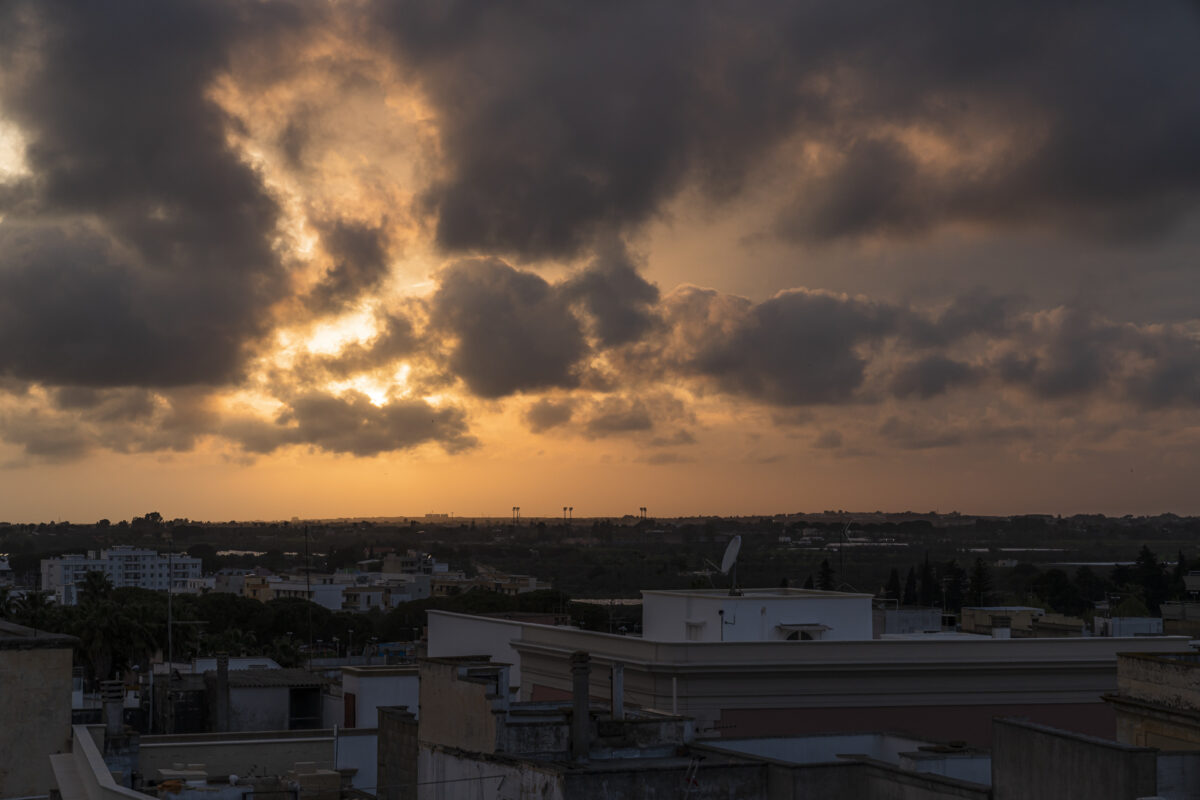
Day 5: Along the coast to Otranto
Because the day before fell through (not only literally, but also effectively – I “chose” the rainy day to be sick), we combine the onward journey to Valle d’Itria, where our third accommodation is located, with a road trip along the “most beautiful coastal road in Puglia“. This leads from Faro Capo Santa Maria di Leuca at the south-eastern point of Italy in a winding 55 kilometres along the SP 358 to Otranto. The pure driving time for this route is a good 1.5 hours. Of course, you will pass numerous villages worth seeing and beautiful coastal sections that invite you to make a stop. As the following pictures show, the weather was not exactly bombastic – so we only stopped at a few selected places (including the Faro di Punta Palascìa).


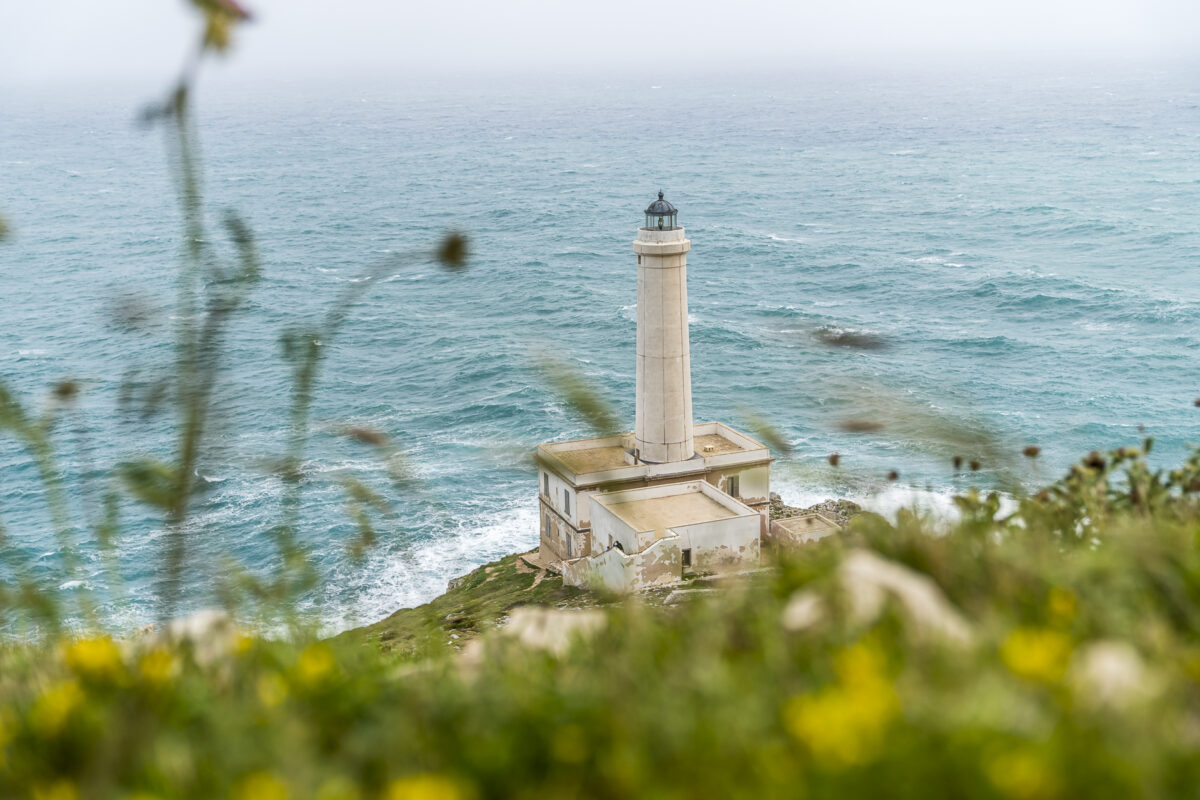
If you have enough time, you can follow the SP 366 further along the coast in a northerly direction after a stopover in Otranto. Here you will find some of the most spectacular bays to discover. Among them is the natural pool of the Grotta della Poesia, surrounded by limestone cliffs. In the high season, however, I would probably avoid this spot, as it is quite popular and quickly overcrowded.
For us, after a tour of Otranto, we also continue in a northerly direction. But now we change to the highway and head for Ostuni. Unfortunately, I don’t really warm up to the port city of Otranto, which as the easternmost city in Italy, as a member of the association “Borghi più belli d’italia” and with its city history, which dates back to the Bronze Age. However, the reason for this is probably not so much the city itself, but the cloudy, wet weather during our visit.

During our onward journey to Ostuni, the rain front moves on, leaving the firmament again to the “blue” that suits Puglia so well. Before we take a look at the old town, which is already visible from afar and enthroned on a hill, we check in at the Masseria Dagilupi (partner link). Our third and last accommodation of this Puglia road trip is located within sight of Ostuni in the middle of hundred-year-old, gnarled olive trees. Here, the aggressive bacterium called “Xylella fastidiosa”, due to which large parts of the olive groves in Salento have been devastated, has not yet raged. It is to be hoped that these magnificent trees will also be spared from this in the future.
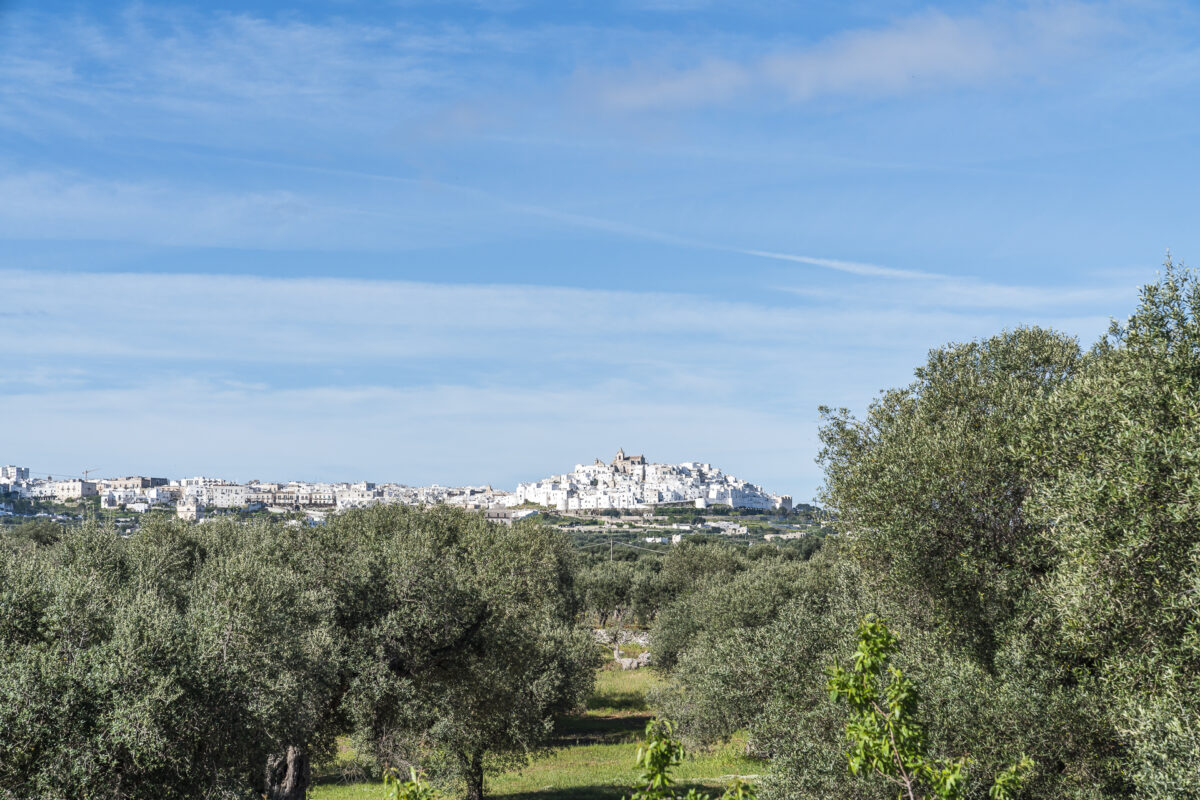
Before dinner, we will take a stroll through the old town of Ostuni. This would be beautiful if it weren’t for countless kitsch shops. It is always frightening how the fact that places are chosen as the so-called “top sights” of a region leads to such developments. In Puglia, this is particularly evident in Ostuni and Alberobello. Nevertheless, between all the tourist junk there are one or two recommendable restaurants. And if you stay at Masseria Dagilupi, you can fall back on the tips tried and tested by the owner couple and summarized in a clear Insta guide. We also followed their recommendations and dined at the Ristorante Dish that evening. The highlight here: the view of the old town of Ostuni.
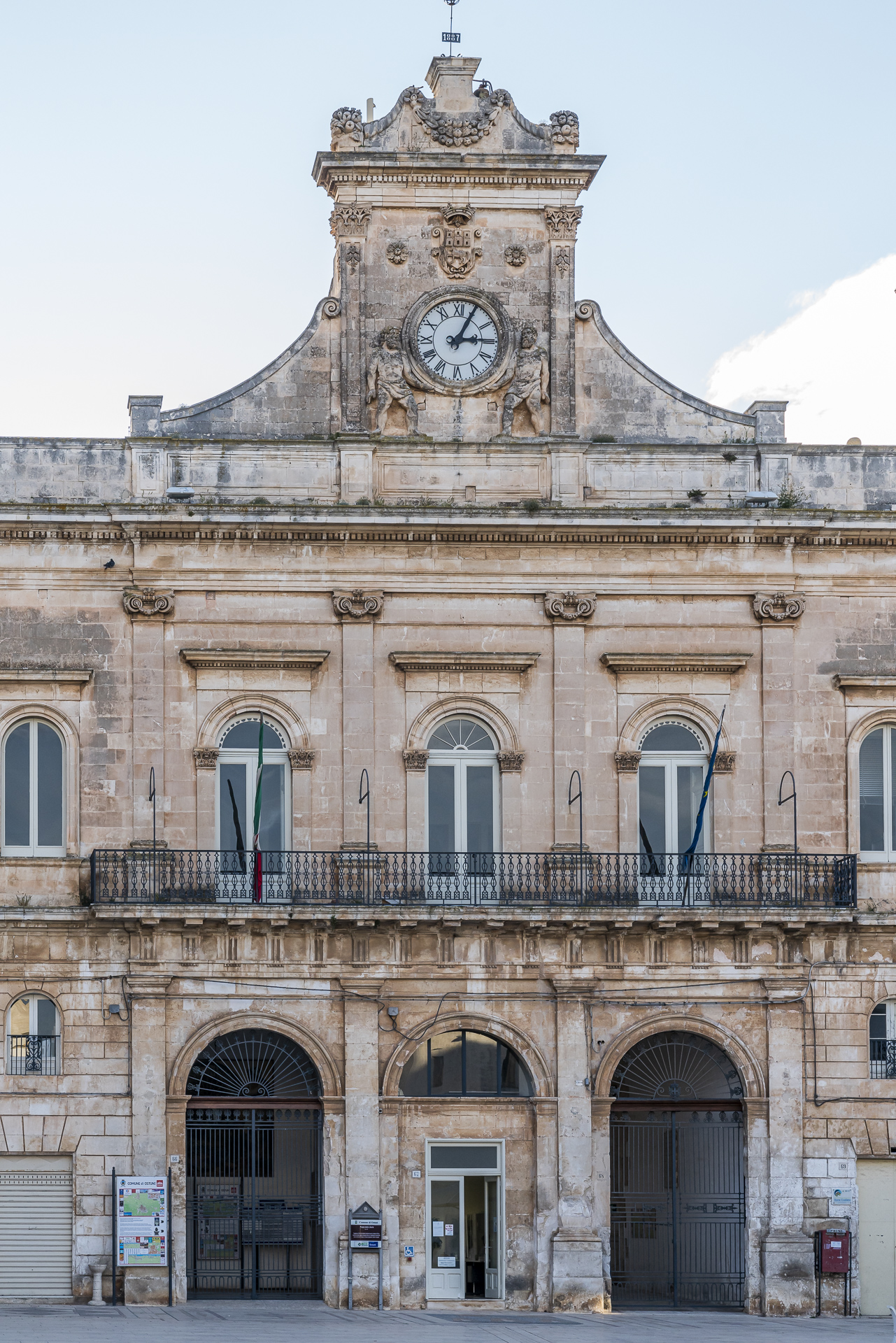
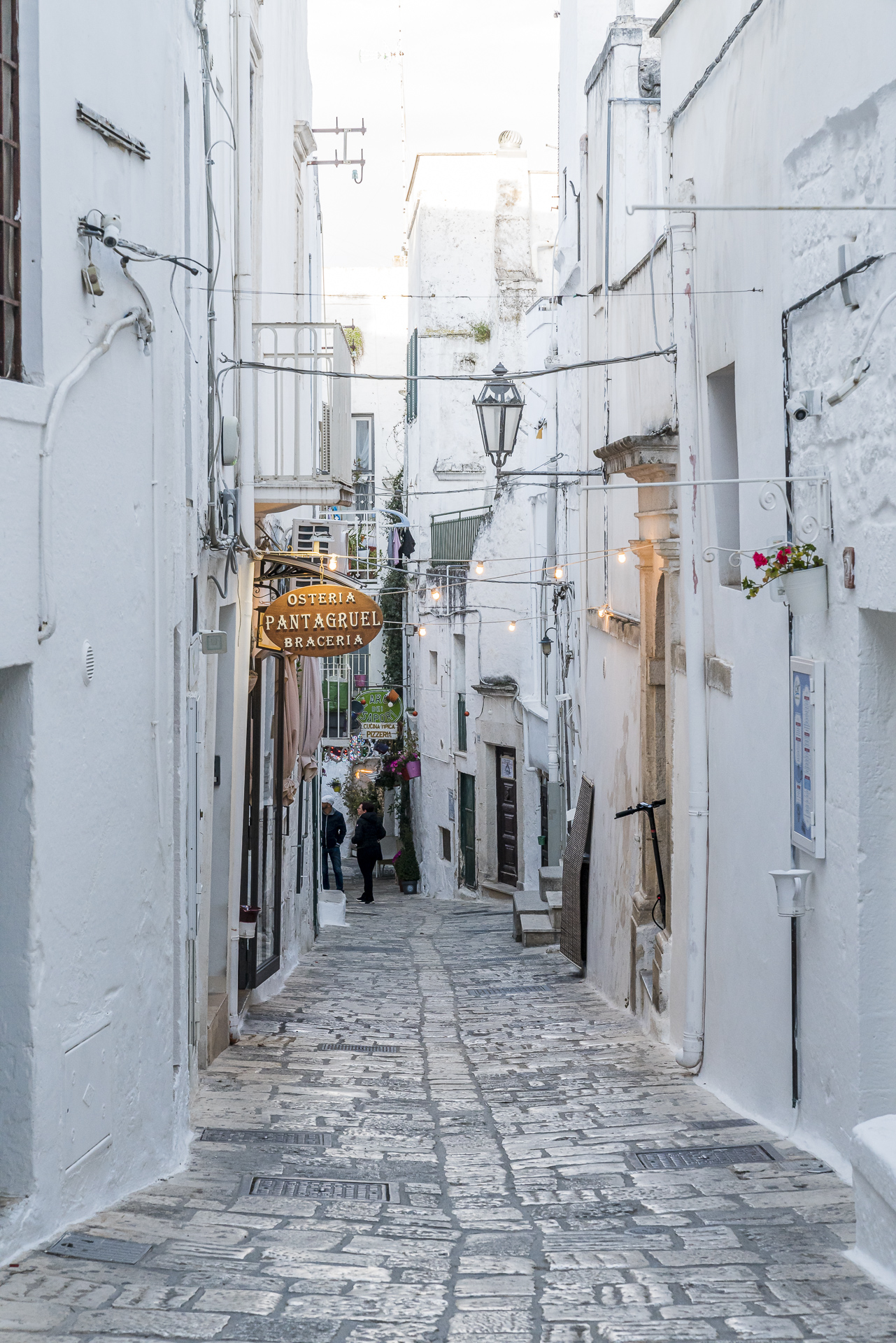
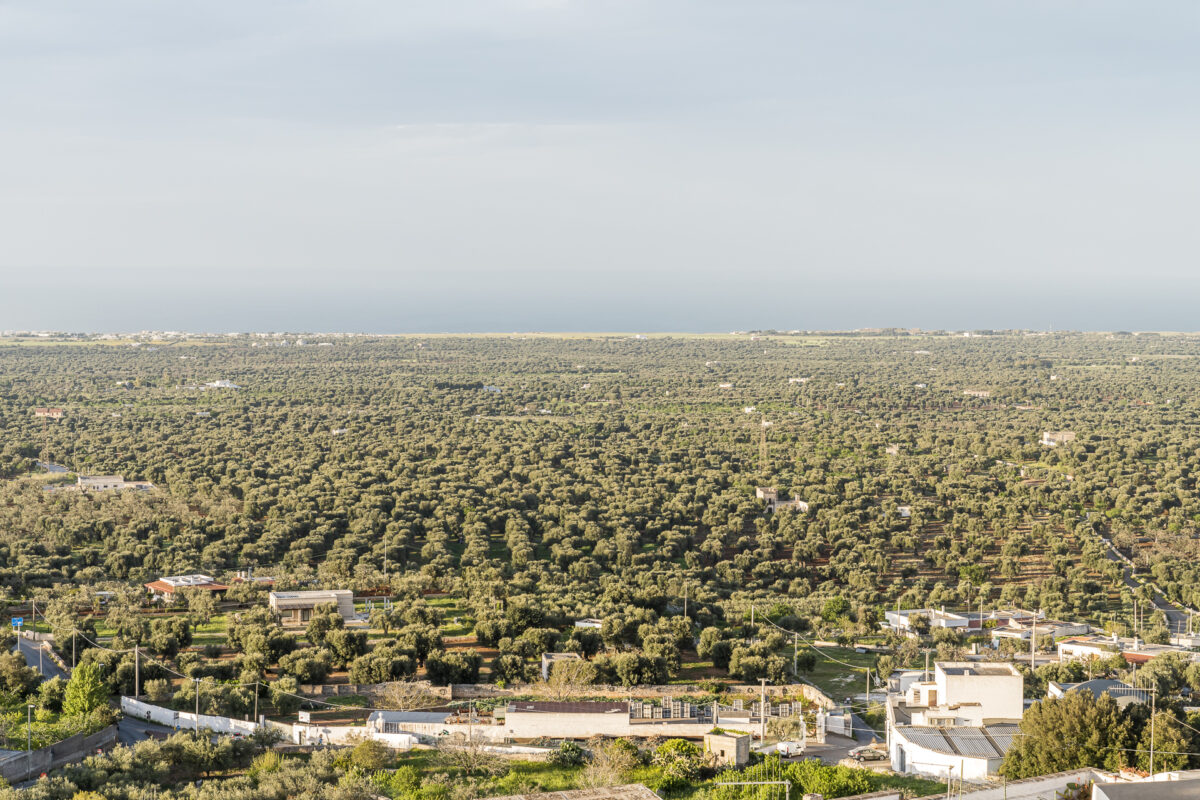
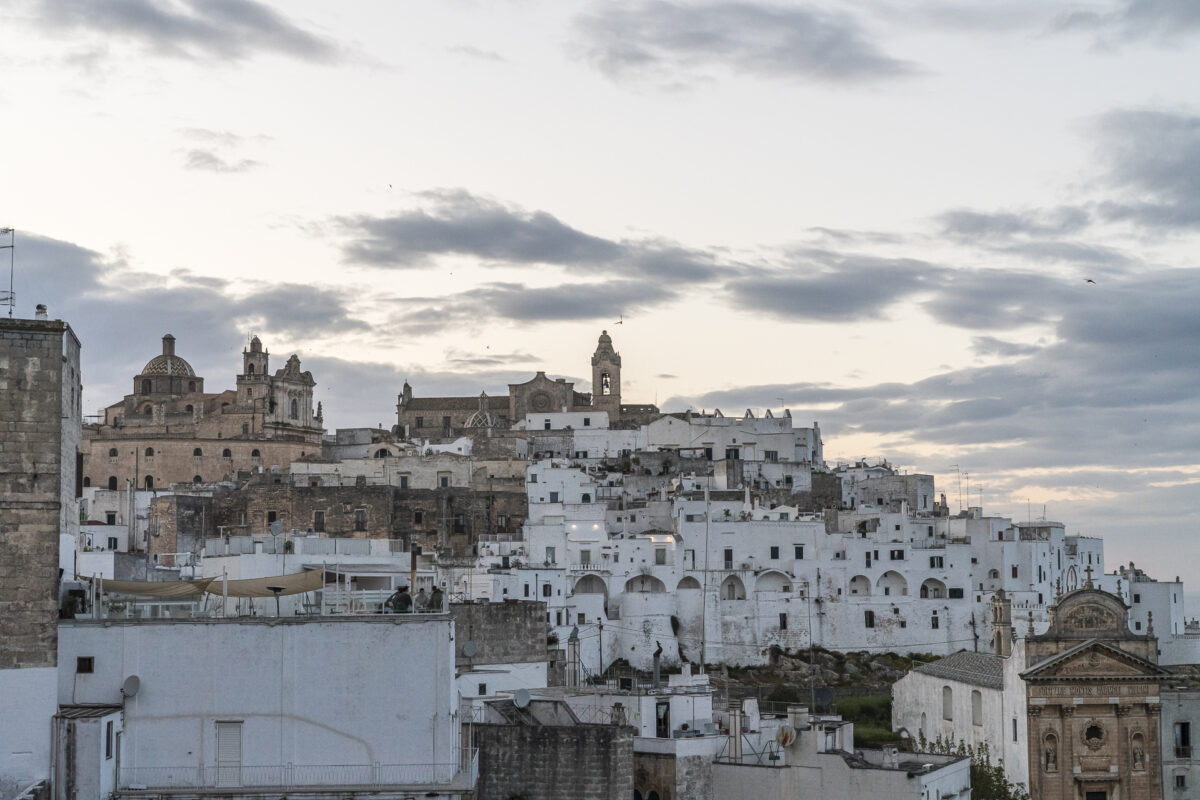
Day 6: the most beautiful places and sights of the Valle d’Itria
After a fantastic breakfast at Masseria Dagilupi, we are ready for a jam-packed day of sightseeing in the Valle d’Itria. Located between the southern foothills of the Murge and Brindisi limestone plateaus, the area is also known as the “Valley of the Trulli” and is one of the “must-stops” on an Apulia road trip. No wonder – the whitewashed, cone-shaped “trulli” (round houses) have become the symbol of Puglia. With the knowledge that no place will be as crowded as the village of “Alberobello“, which is classified as a UNESCO World Heritage Site, we head for it first.
We are on site around 10:00 a.m. and find a parking space at the level of “Parcheggio Via Cristoforo Colombo” without any problems. This is a paid parking lot, which is a matter of course for me, because otherwise you don’t have to pay any further entrance fee or the like. has to pay. From the car park it is about a ten-minute walk to the historic centre of Alberobello. The area with the “trullis” stretches on both sides of the main road. Particularly picturesque are the two southern alleys between Via Monte Cucco and Via Monte Pertica. But this is also where most of the tourists hang out.
Slightly less frequented are the alleys around Via Giuseppe Verdi in the northeastern part of Alberobello. From this side there are also the most beautiful panoramic views over the rooftop landscape of the trulli. The best view is from the “Villa Comunale Belvedere Parco” and from the viewing terrace next to the Chiesa Santa Lucia.
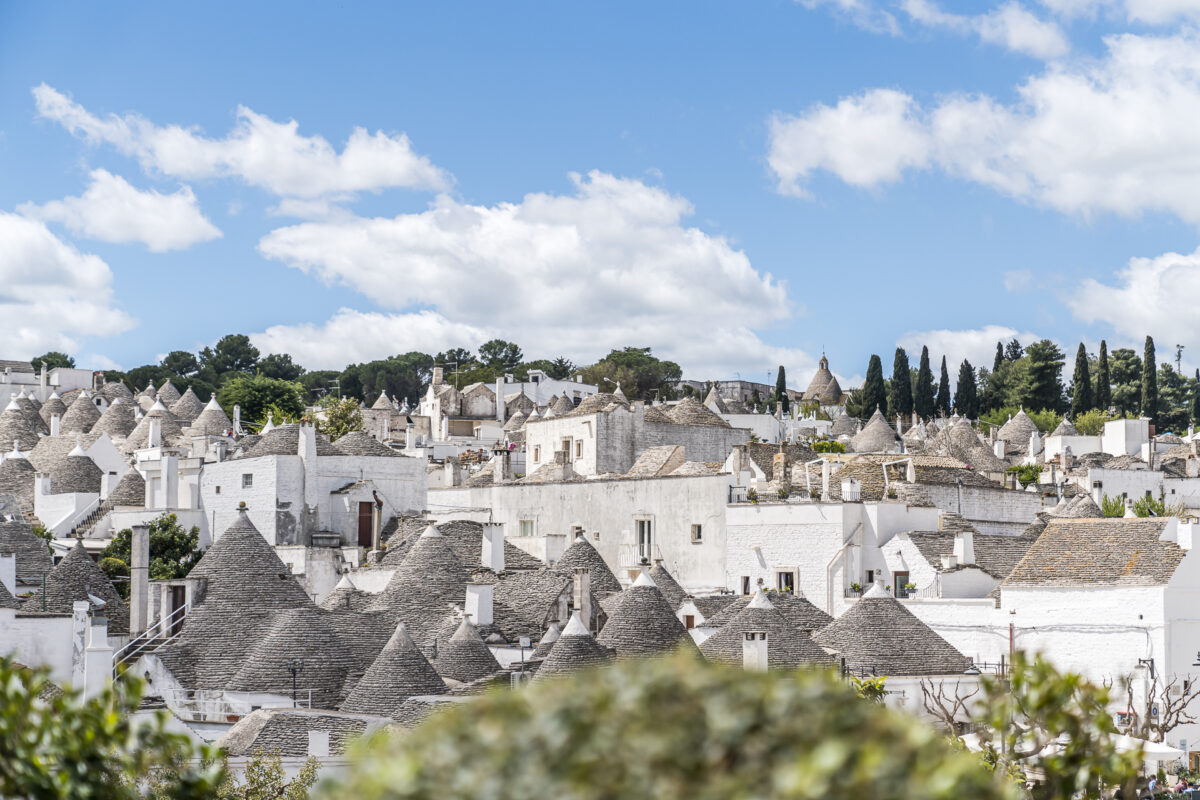
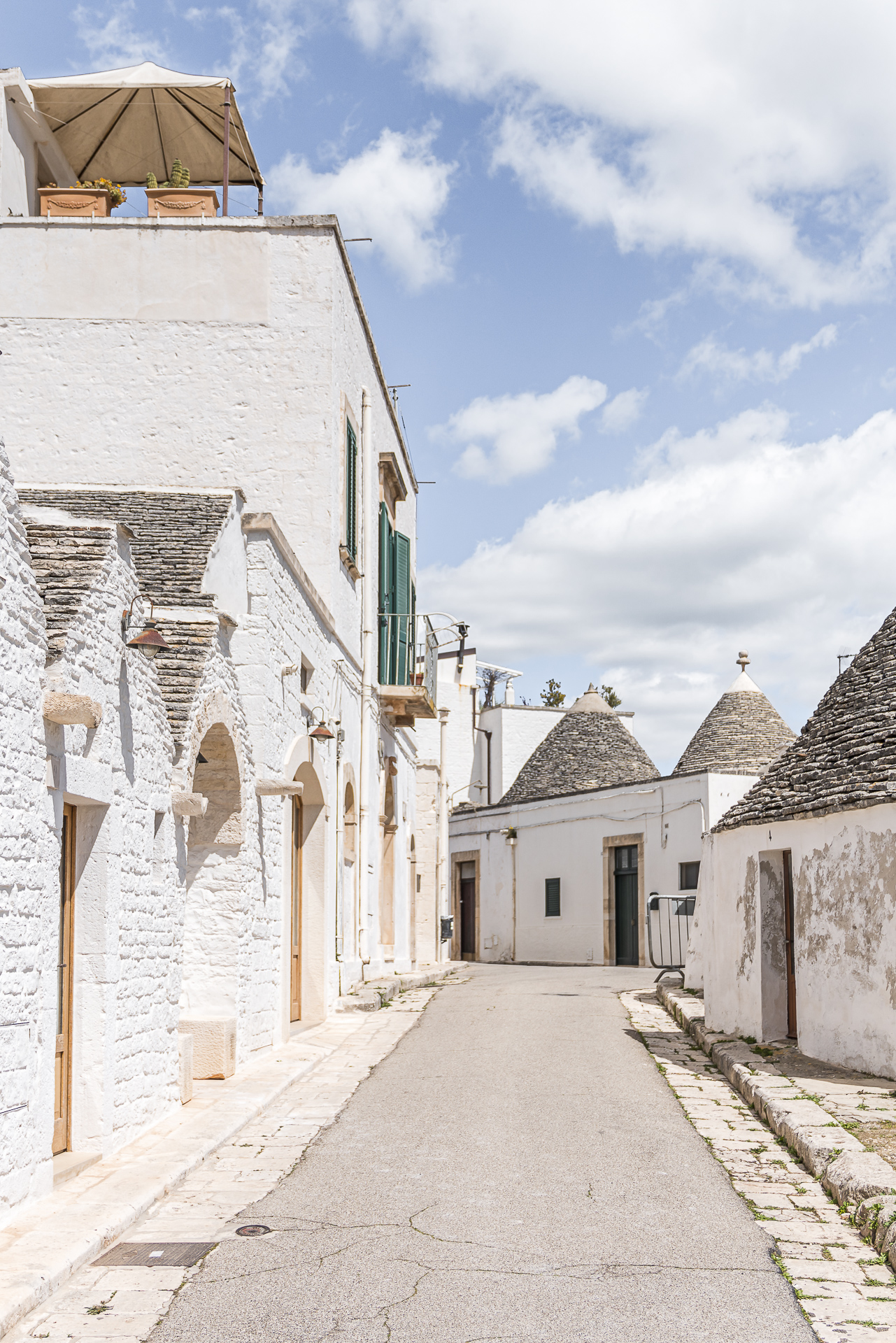
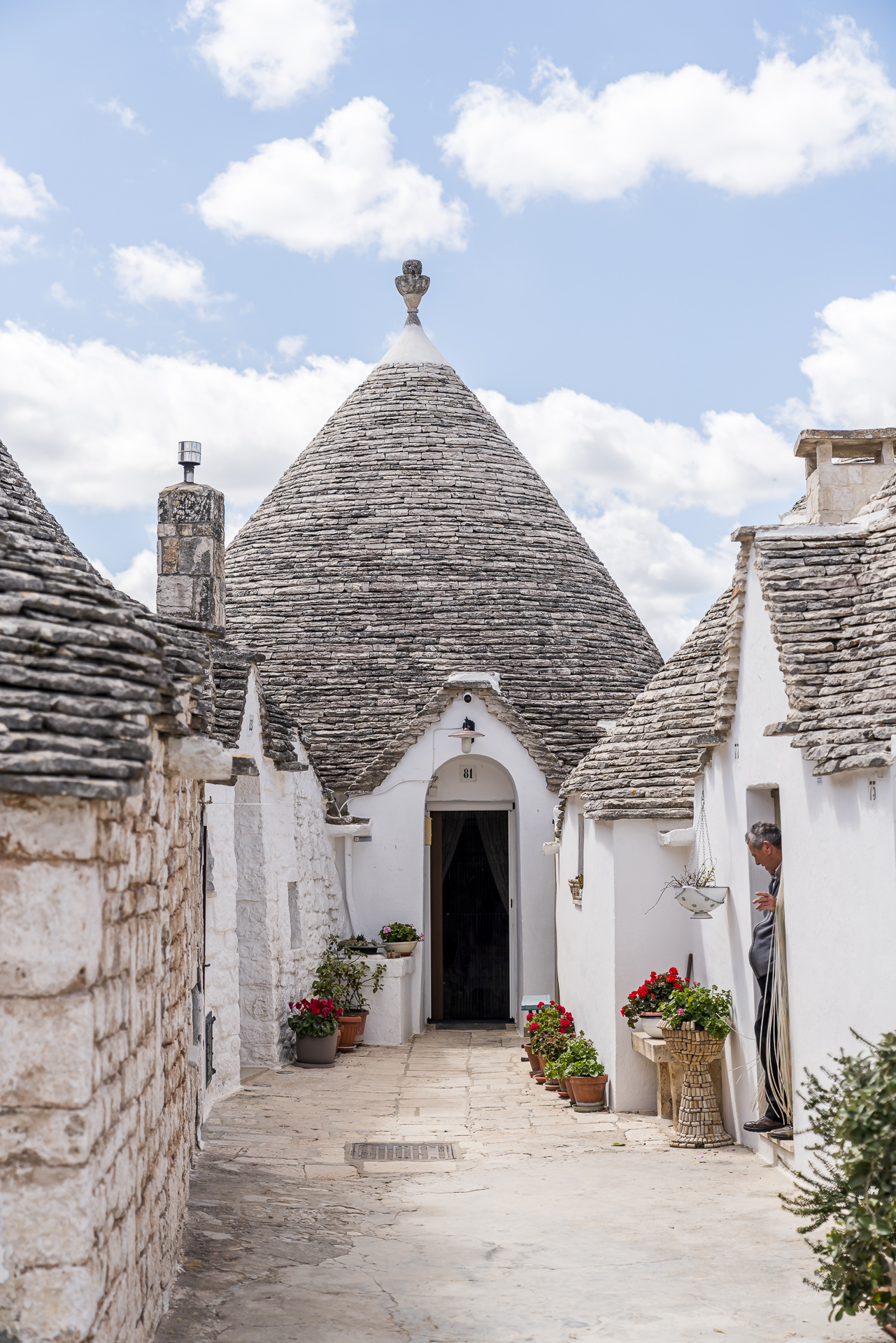
Of course, there are numerous places to stop for refreshments in Alberobello. For lunch, however, we prefer the less crowded Locorotondo. Here we catch one of the last free tables of the Osteria il Rosone in one of the picturesque alleys of the old town. This is also one of the restaurant recommendations that can be found in the Insta guide of Masseria Dagilupi.
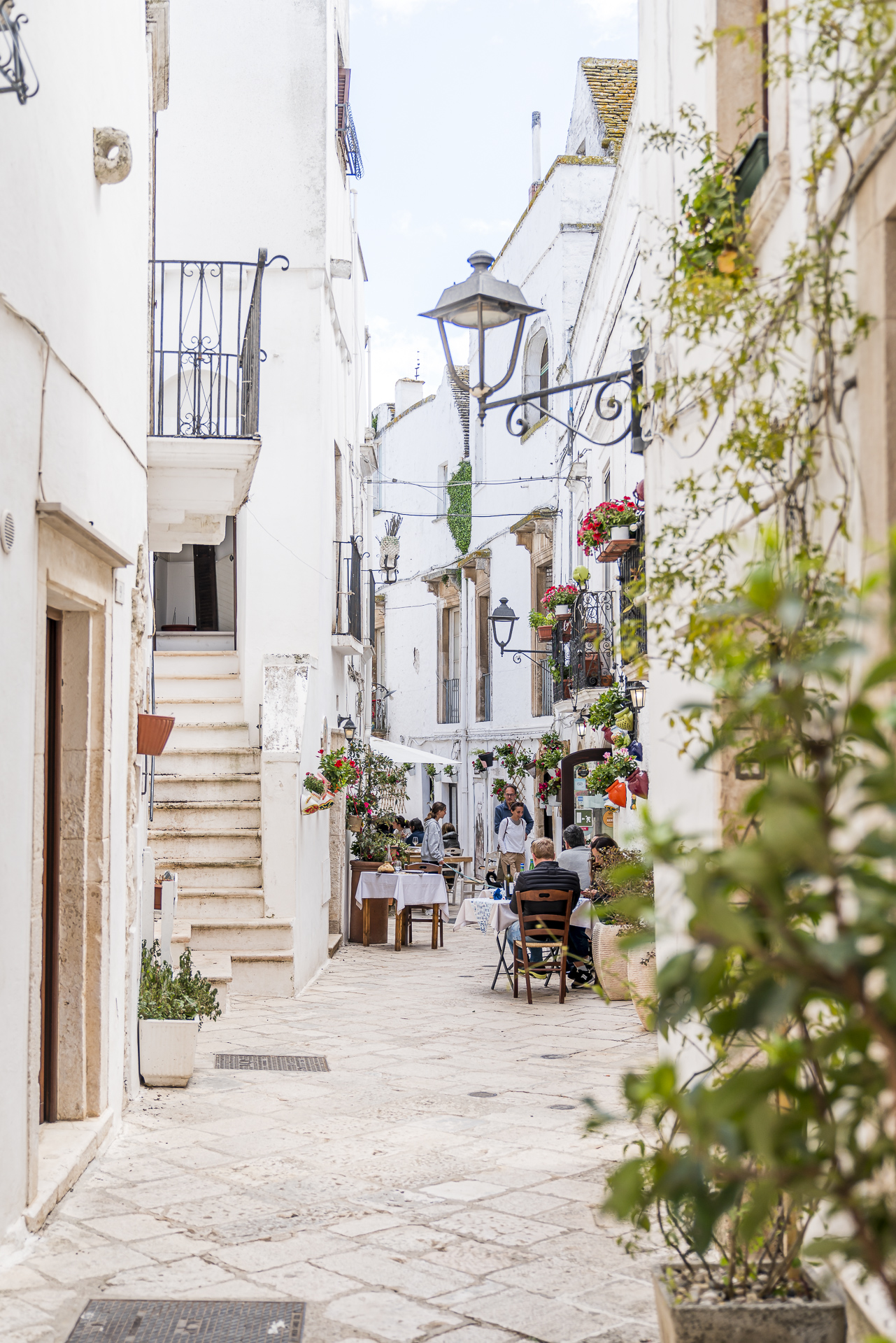
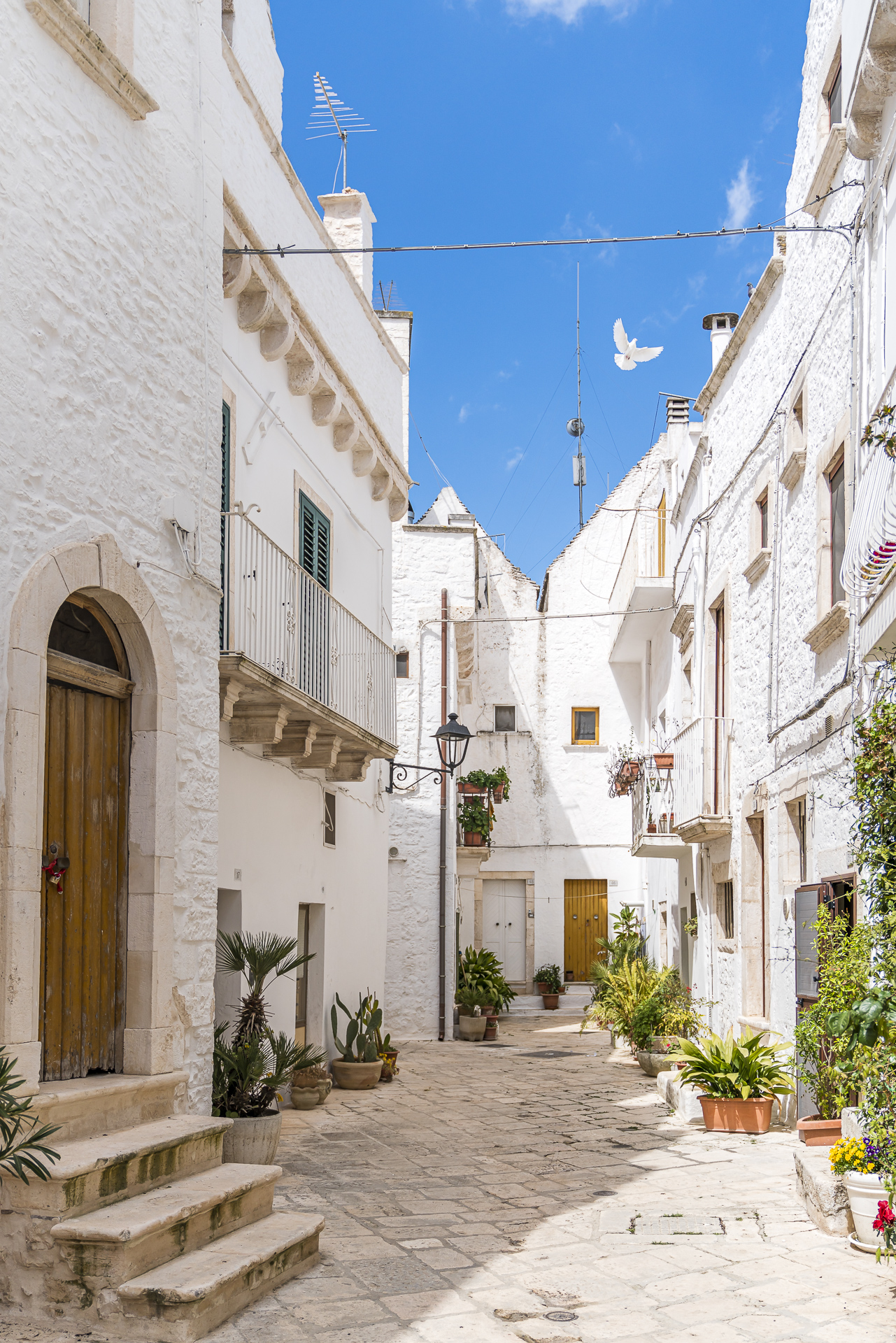
I both liked Locorotondo and the neighboring Cisternino. The following applies to both places: Head for the old town centre (parking spaces are within walking distance) and then simply drift through the alleys on foot.

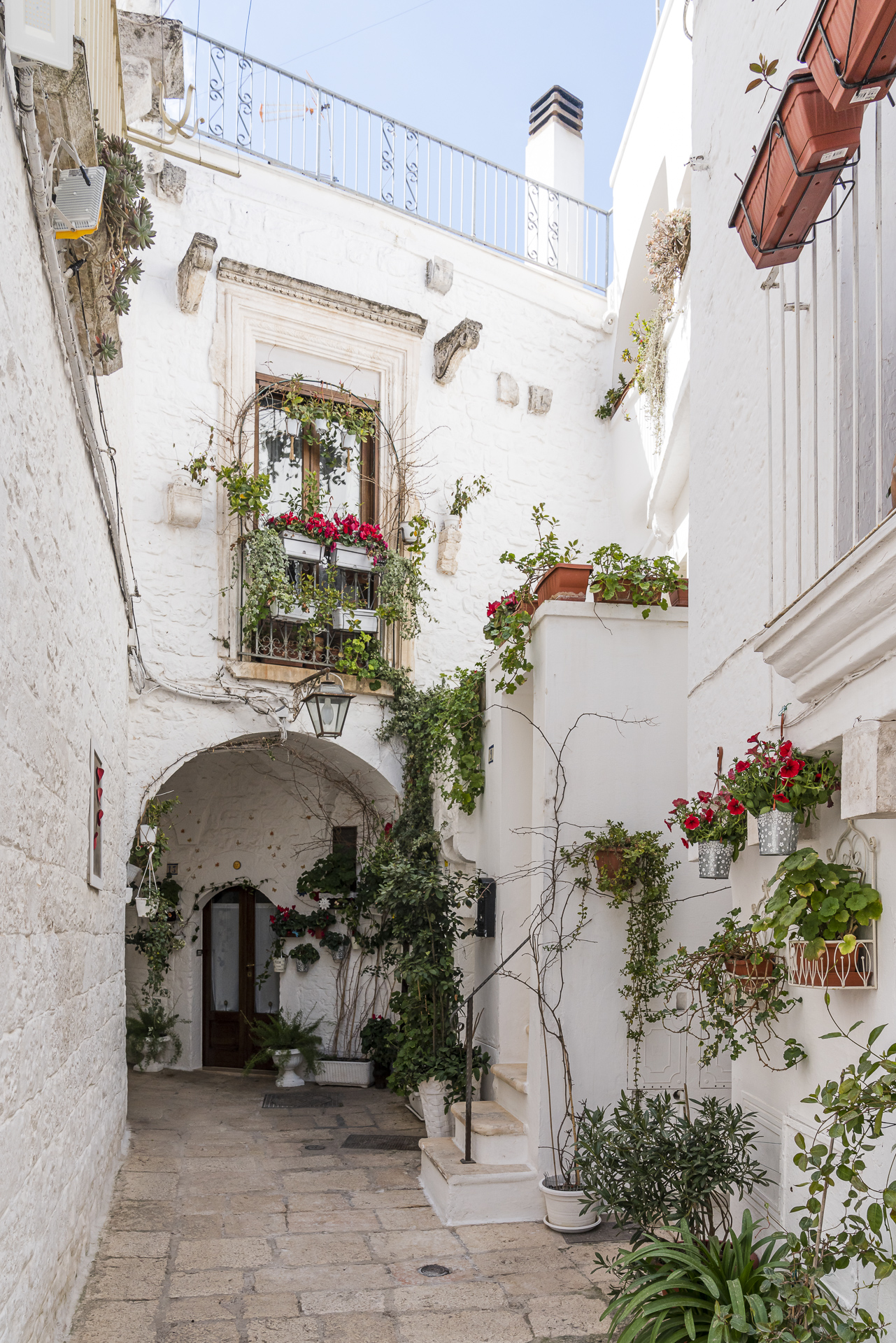
Around 3:00 p.m. we are back at the Masseria. We deliberately didn’t pack this day too crowded. After all, our wonderful sun terrace in the middle of this wonderfully relaxing backdrop of olive trees wants to be enjoyed for a few hours.
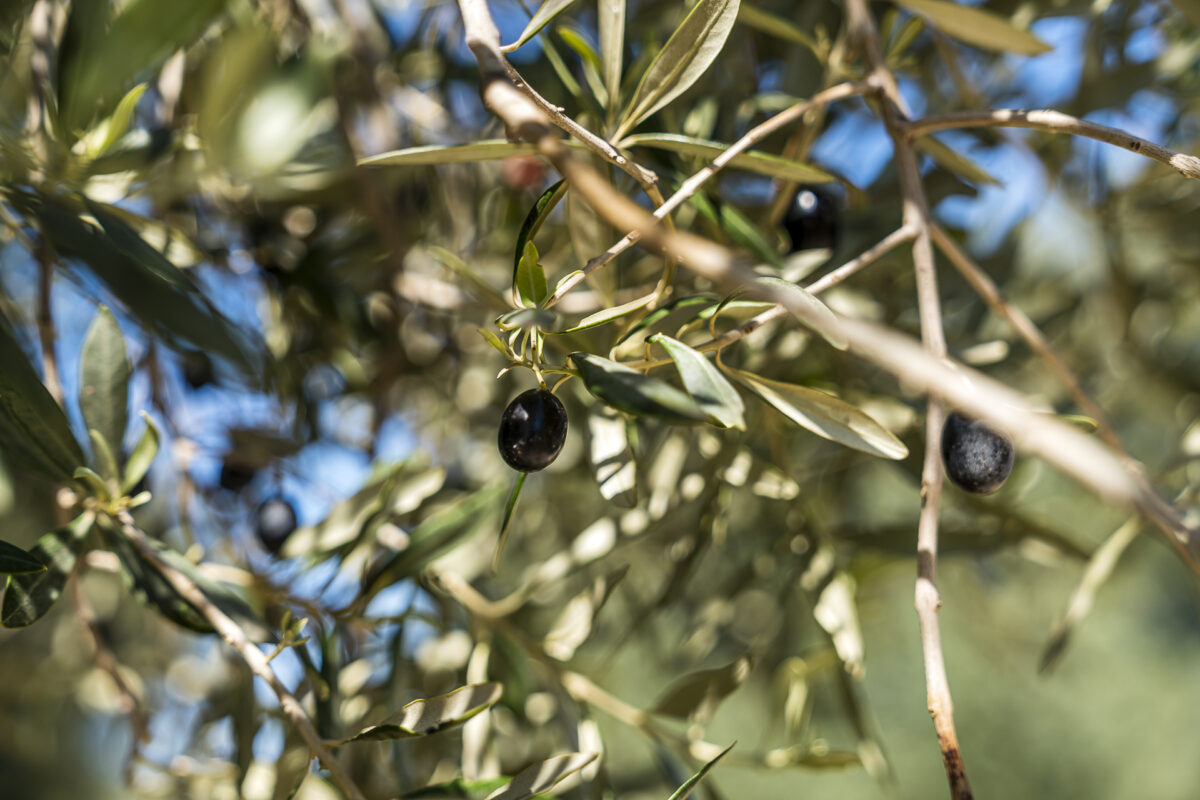
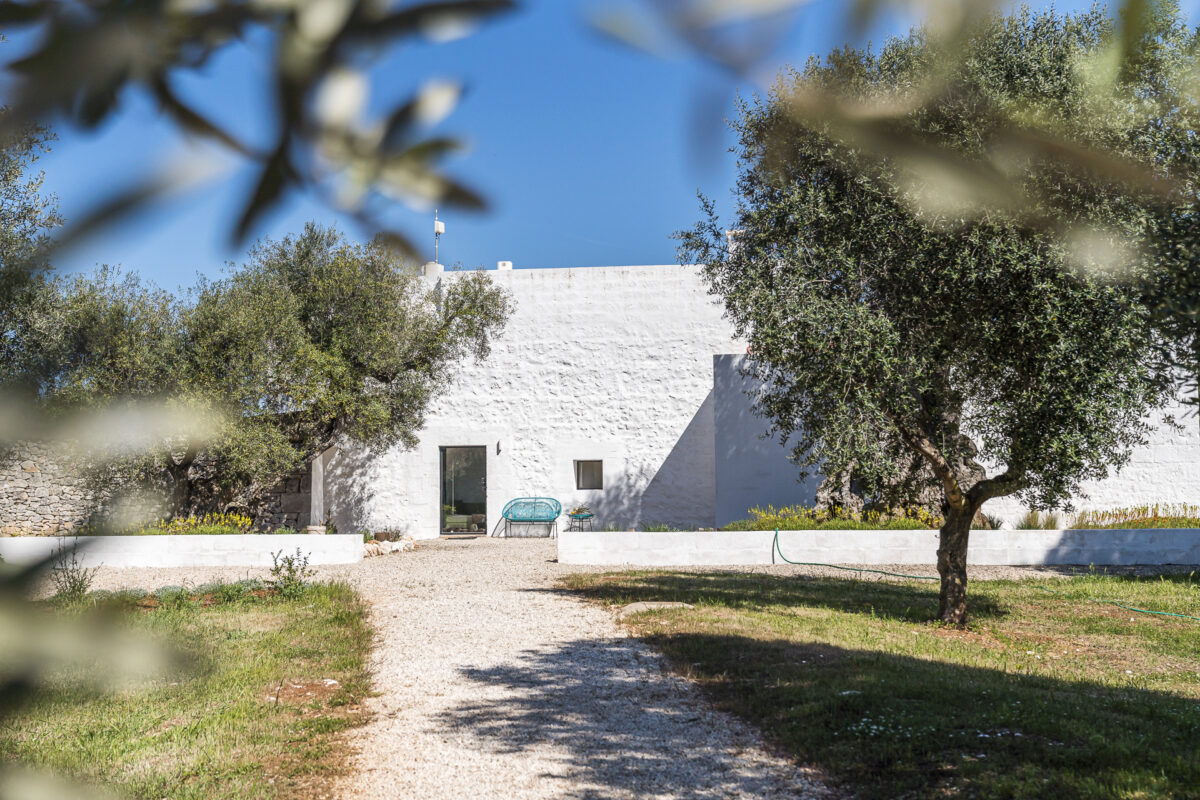
Originally, we had planned to go back to Ostuni for dinner. However, since the atmosphere the day before didn’t grab me so much, we spontaneously decide to make a detour to neighboring Carovigno. The main attraction here is probably the Castello Dentice di Frasso di Carovigno. We take a quick look at it from the outside and then enjoy a wonderful evening in the wine bar “Sommarco“. The small bar is located in the centre of the small old town of Carovigno and is a hot tip for all those who like to taste natural wines and taste suitable, carefully composed appetizers. In addition to the Jamantè, my second culinary highlight in Puglia.
Day 7: A detour to the Alta Murgia
Today we continue to Matera in the neighboring region of Basilicata. The trip there can be combined with a visit to some villages not far from the Alta Murgia National Park, including Altamura and Gravina di Puglia.
But first of all, we head for Martina Franca, which is also located in the Valle d’Itria, in a triangle with Locorotondo and Cisternino. I am fascinated by how these three places are geographically so close to each other and yet each has its unique selling points. We start our tour of Martina Franca at the Palazzo Ducale, an imposing building in representative baroque style. If you, like us, follow the Via Vittorio Emanuele in the direction of the Basilica di San Martino, you will hardly be amazed. One impressive façade follows the next.
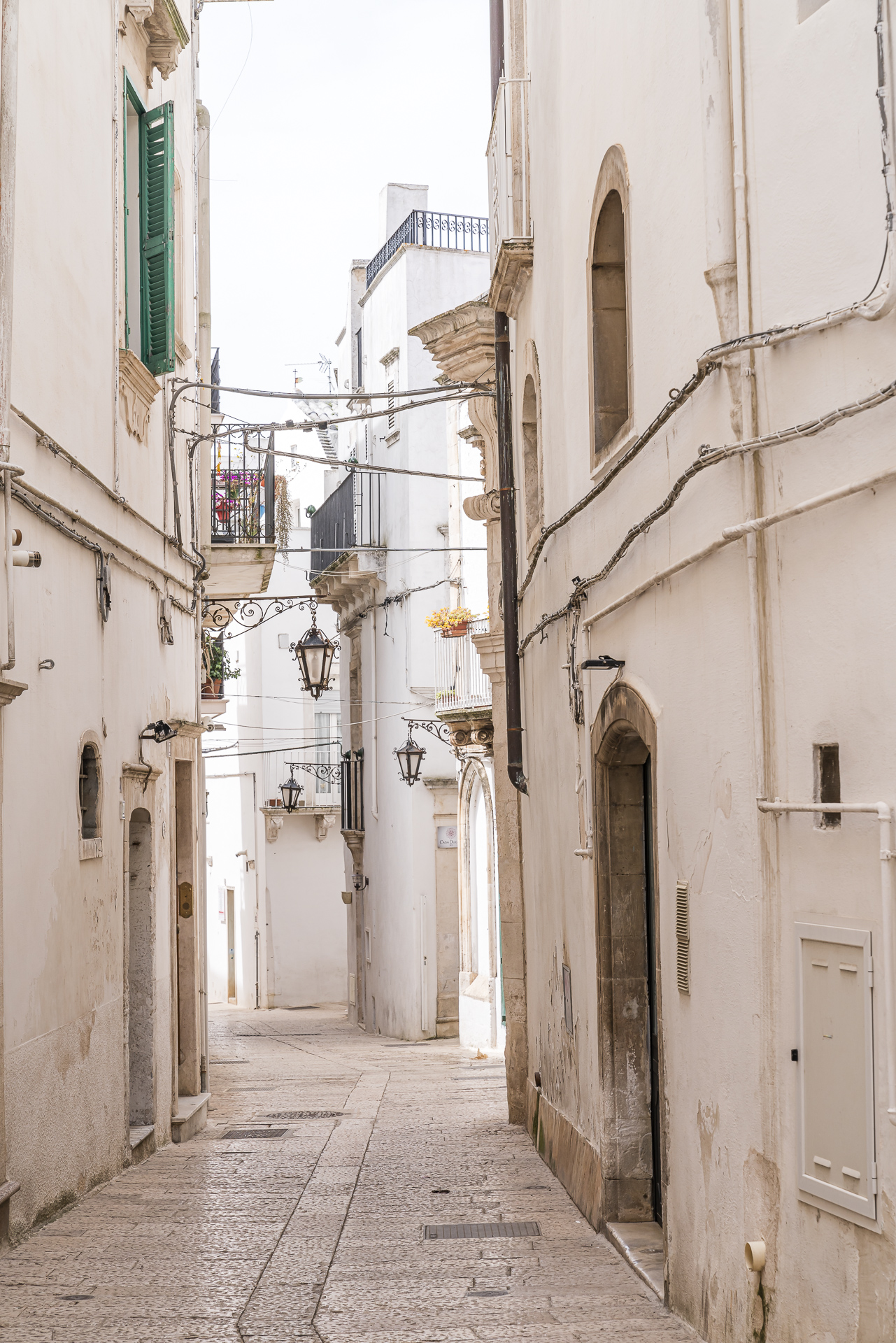
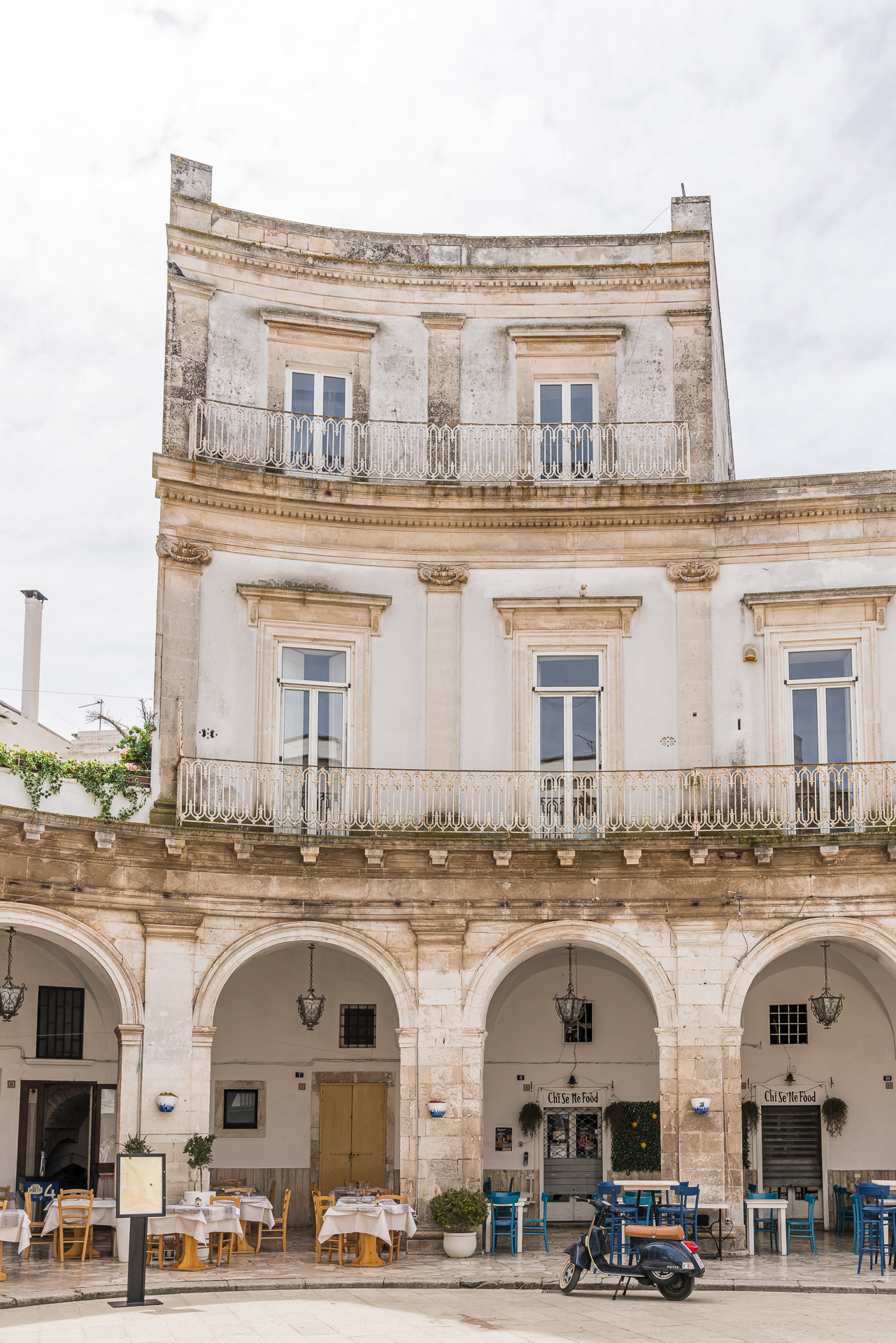
Next, we stop in Altamura. For the gourmets among you, we recommend taking a look at the website of the Ristorante Angelo Sabatelli in Putignano. This is considered one of the best Michelin-starred restaurants in Puglia. Unfortunately, it is only open in the evening and does not offer lunch menus. Otherwise, we probably would have added another stopover on the way to Altamura.
Altamura is named after the high city wall “alta Mura”, which was built during the reign of Frederick II. I was impressed by two things in Altamura: First, we met practically no other tourists here. And secondly, the Cathedral of Santa Maria Assunta with its ornately designed portal. Another special feature of Altamura are the branching alleys of the old town, which often end in a cul-de-sac or in backyards (so-called “claustri”).
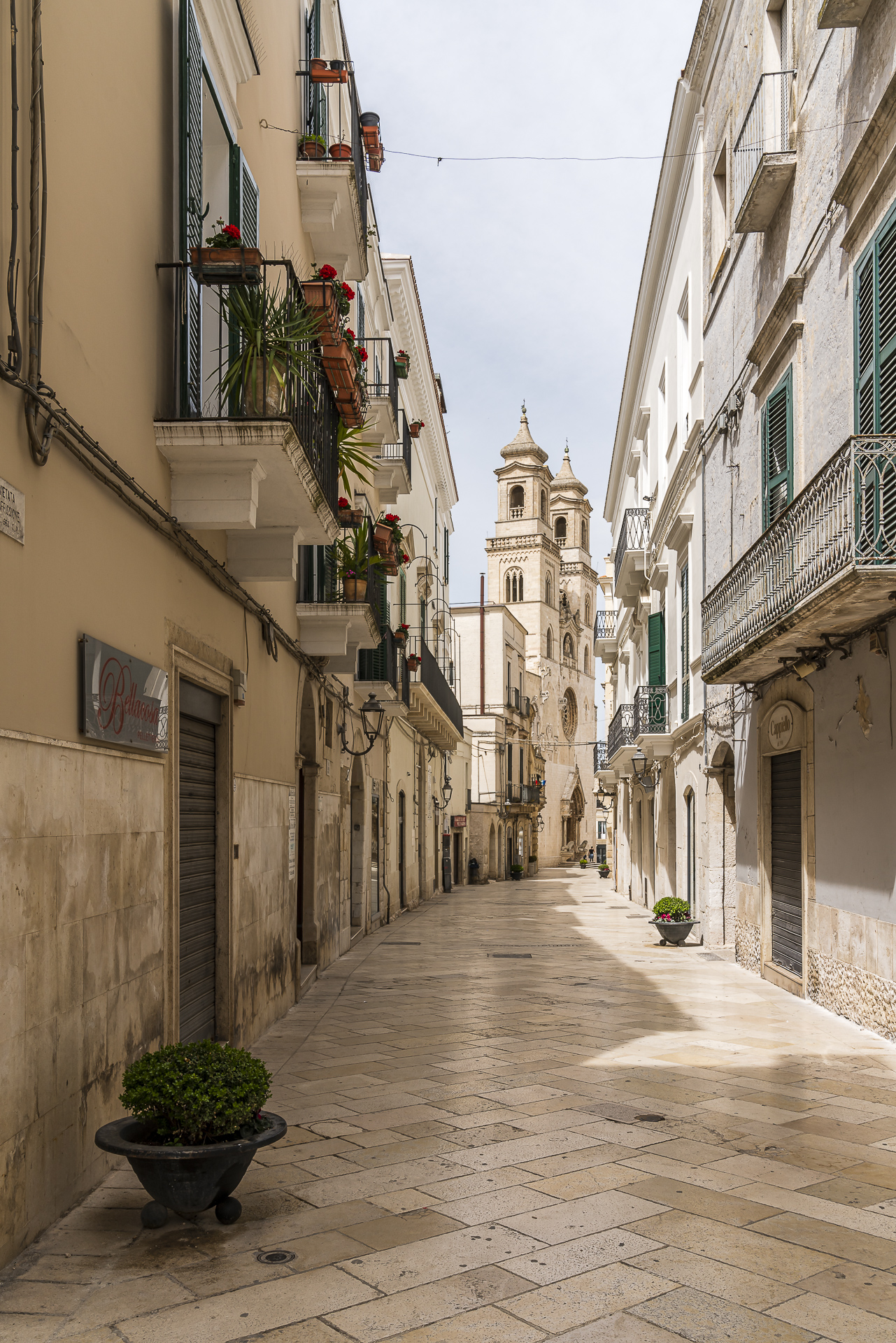
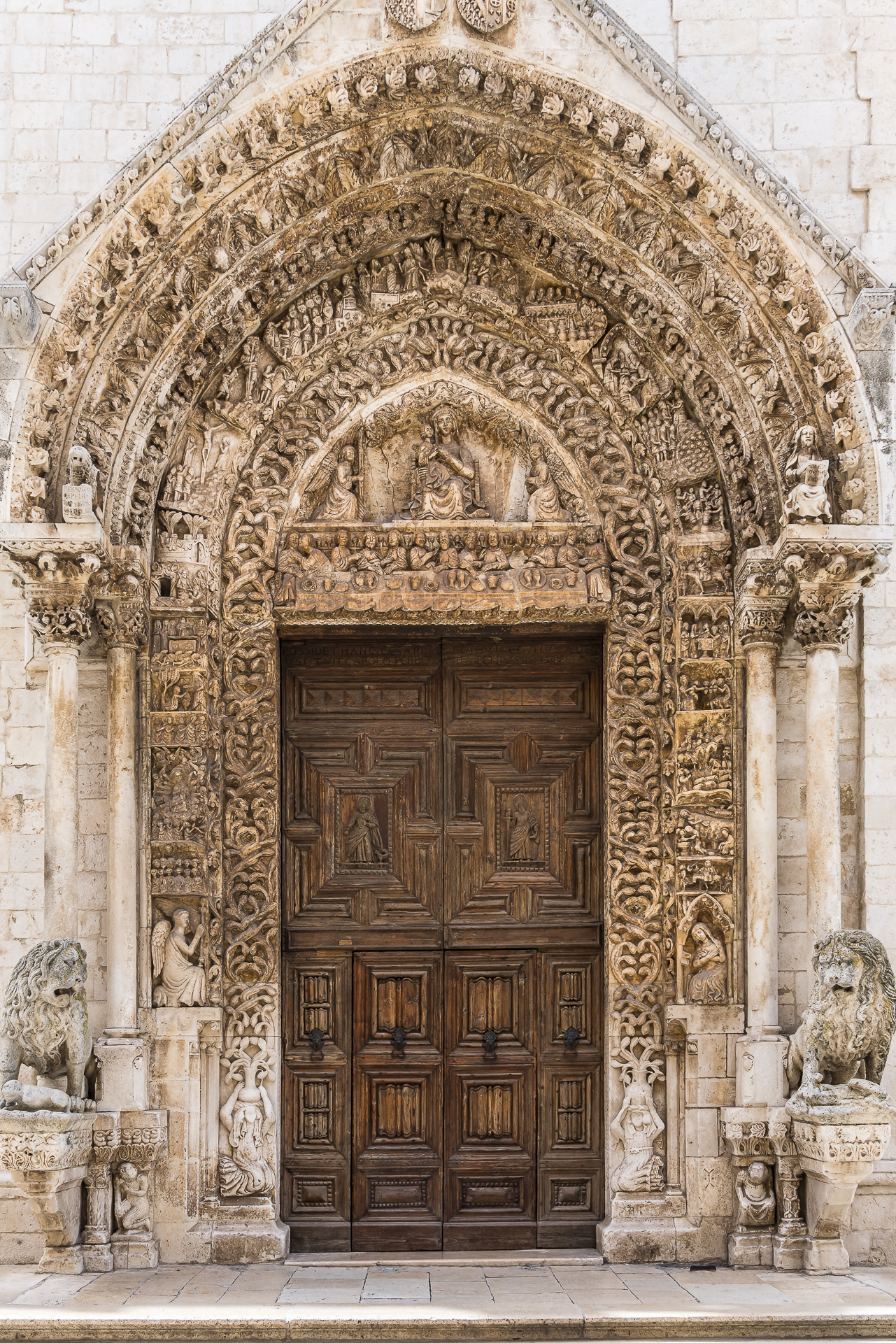
I had hardly dealt with the cities of Altamura and our next stop – Gravina di Puglia – in advance. Accordingly, I didn’t have any expectations and that’s probably why I’m particularly fond of these two places. Gravina di Puglia also scores (like all villages in Puglia) with a pretty old town center. In addition, as in neighbouring Matera, rock churches and “cave dwellings” can be visited here. The main attraction of Gravina di Puglia, however, is the 37-metre-long “Ponte Acquedotto“. By the way, this can also be seen in a scene of the James Bond film “No time to die” (so don’t look for Matera).
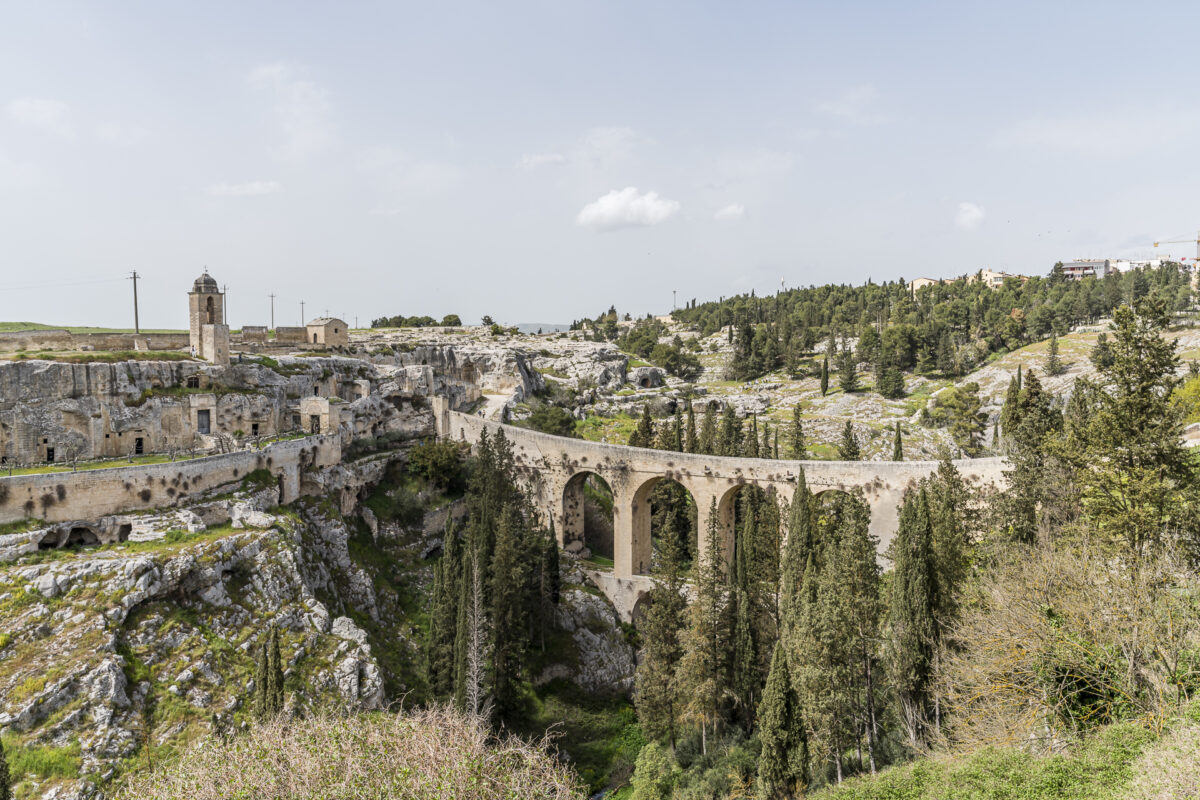
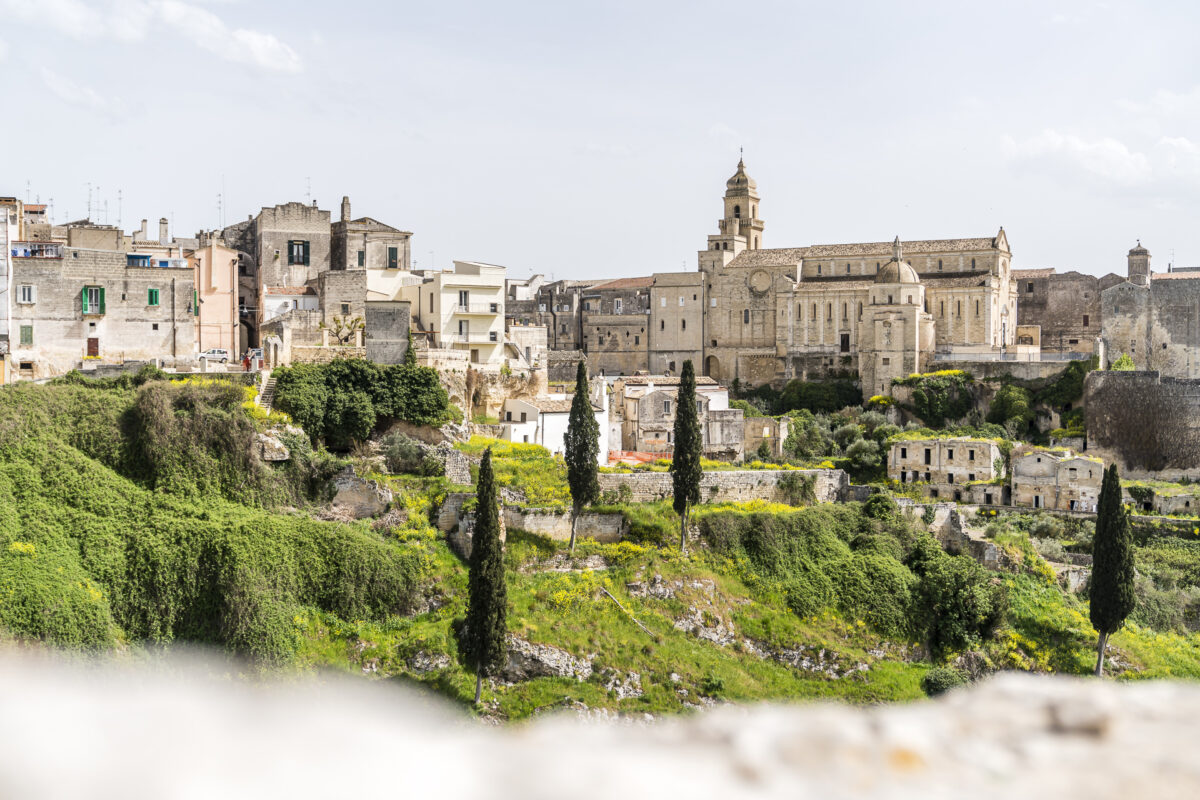
The conclusion of our Puglia road trip: One week is not enough to check out all the sights of Puglia. There are so many beautiful places in the heel of Italy’s boot that you definitely have to pick out the highlights tailored to your own interests. However, we found the time period ideal to get a good overview of the scenic area and to explore those places that were on our personal bucket list. At the same time, however, we also discover one or two “insider tips” “on the road”. In this respect, the chosen itinerary, the duration of the road trip and also the time (pre-season) were just right for our needs.
Practical tips for your road trip through Puglia
Puglia is a region in southern Italy. It is located in the south-east and forms the so-called “boot heel”. The cities of Foggia, Bari, Brindisi and Lecce are located in Puglia.
Puglia is incredibly multifaceted. Whether it’s a beach holiday, a city trip or a mixture of relaxation and culture – Puglia is able to cover all interests. It is particularly beautiful on the Adriatic coast at the height of Polignano a Mare and Monopoli. Another highlight is the Valle d’Itria with Ostuni and Alberobello. And if you like beautiful sandy beaches, you will find what you are looking for on the Salento peninsula in the very south of Puglia.
Puglia is connected to the Italian high-speed network. From Zurich or Bern, you can reach the regional capital Bari by train with a single change in Milan. Another option is to take the night train from Milan to Lecce. This allows you to reach Puglia overnight virtually “in your sleep”.
In almost all cities, there are larger, usually fee-based parking spaces within walking distance of the old town centre. These are marked on Google Maps and are usually signposted. We have had good experiences parking our rental car in such parking lots and have deliberately avoided free street parking. Unless you travel through Puglia during the high season/summer months, there are always plenty of parking spaces. For popular tourist resorts such as Polignano a Mare, Alberobello or Ostuni, it is worth getting there early.
The majority of the round houses typical of Puglia are called “trullo” or “trulli”. If you want to visit the trulli, you should plan a stopover in the Valle d’Itria on your trip to Puglia.
The beaches of Puglia are very versatile. On the Adriatic coast, in addition to many rocky bays, there are also isolated sandy beaches. Some of the most beautiful sandy beaches can be found on the west coast of Salento on the Ionian Sea. These can be found both north of Gallipolli and south towards Santa Maria di Leuca.


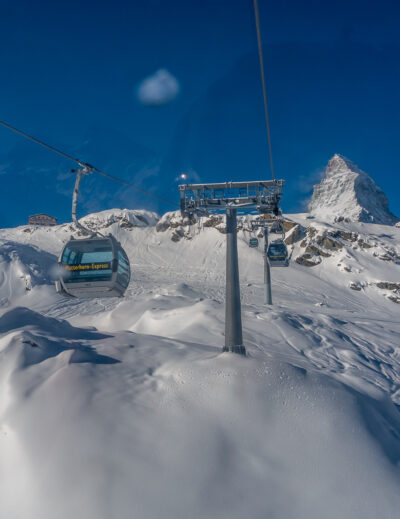

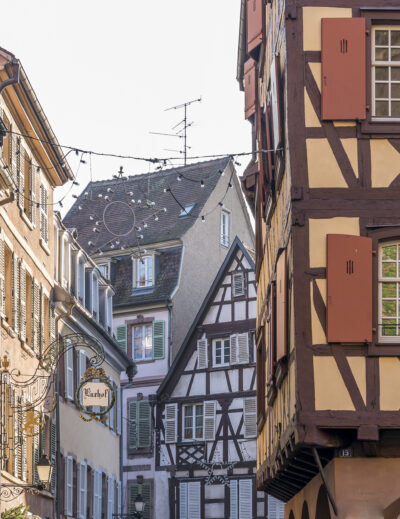
Leave a Reply